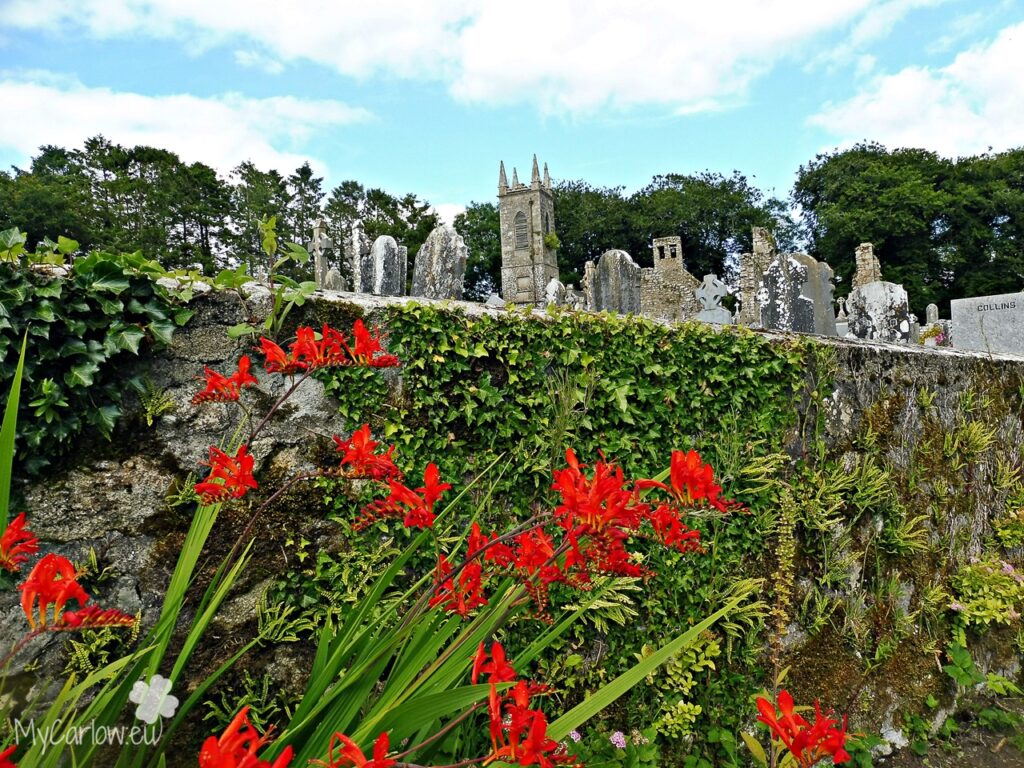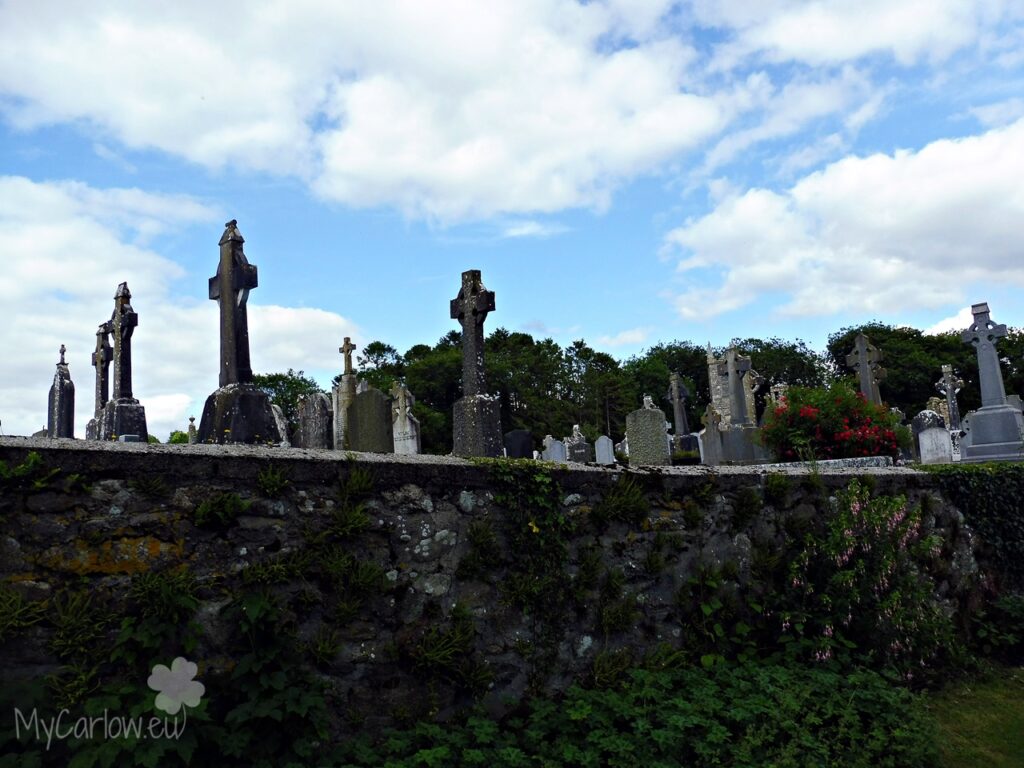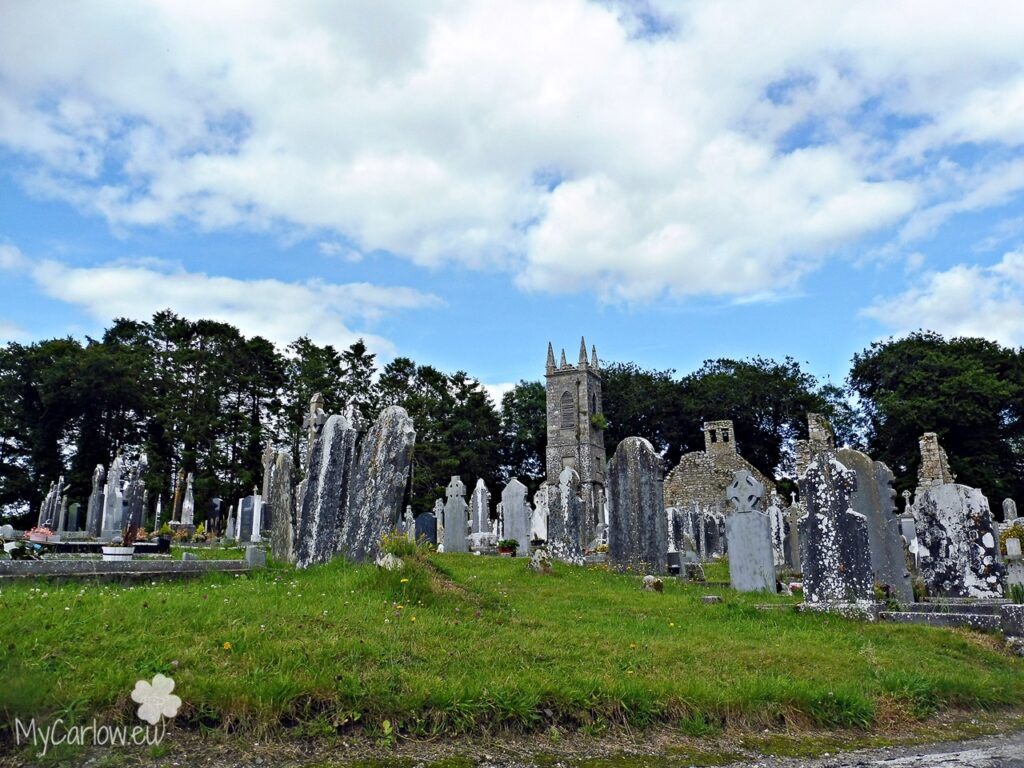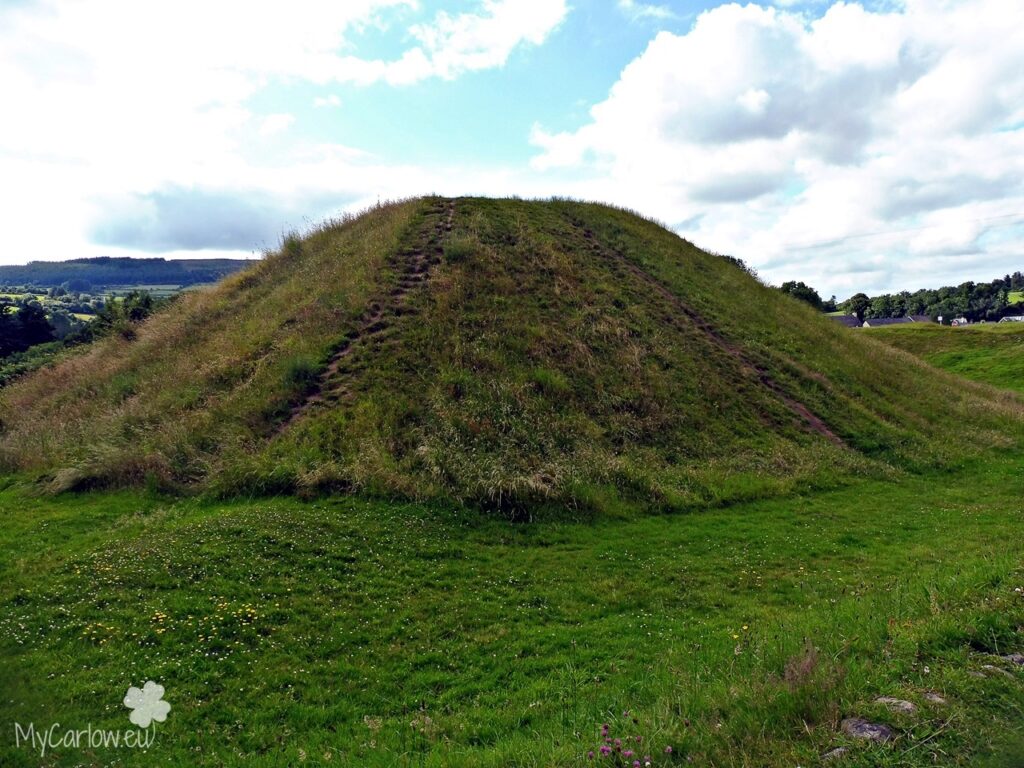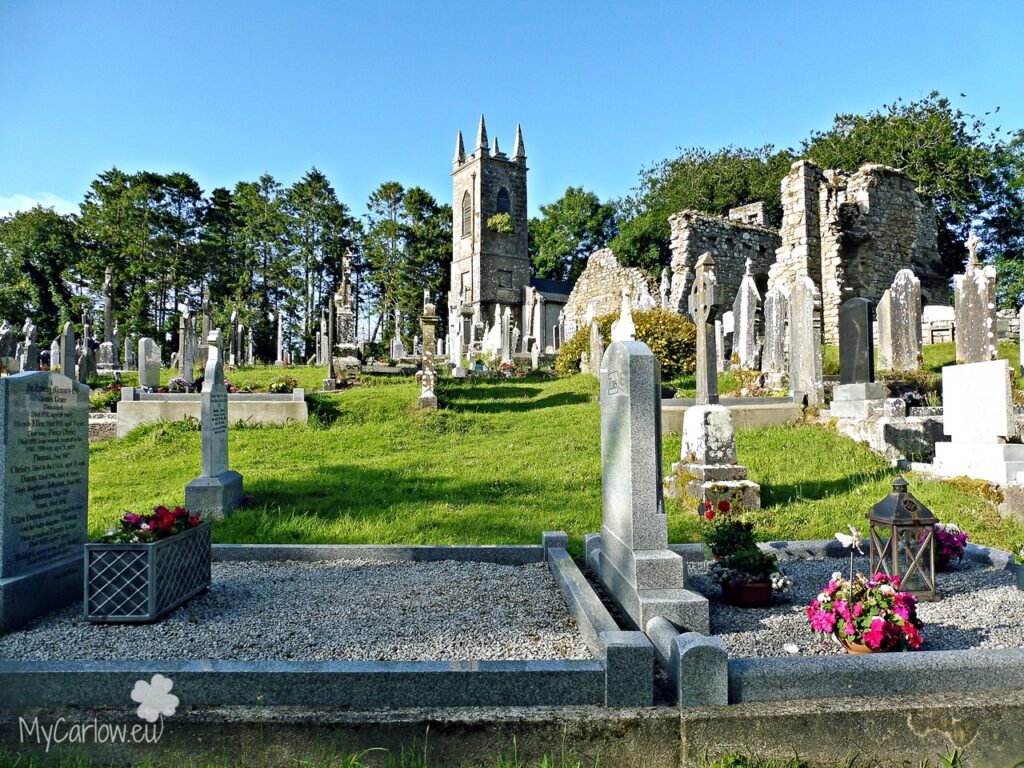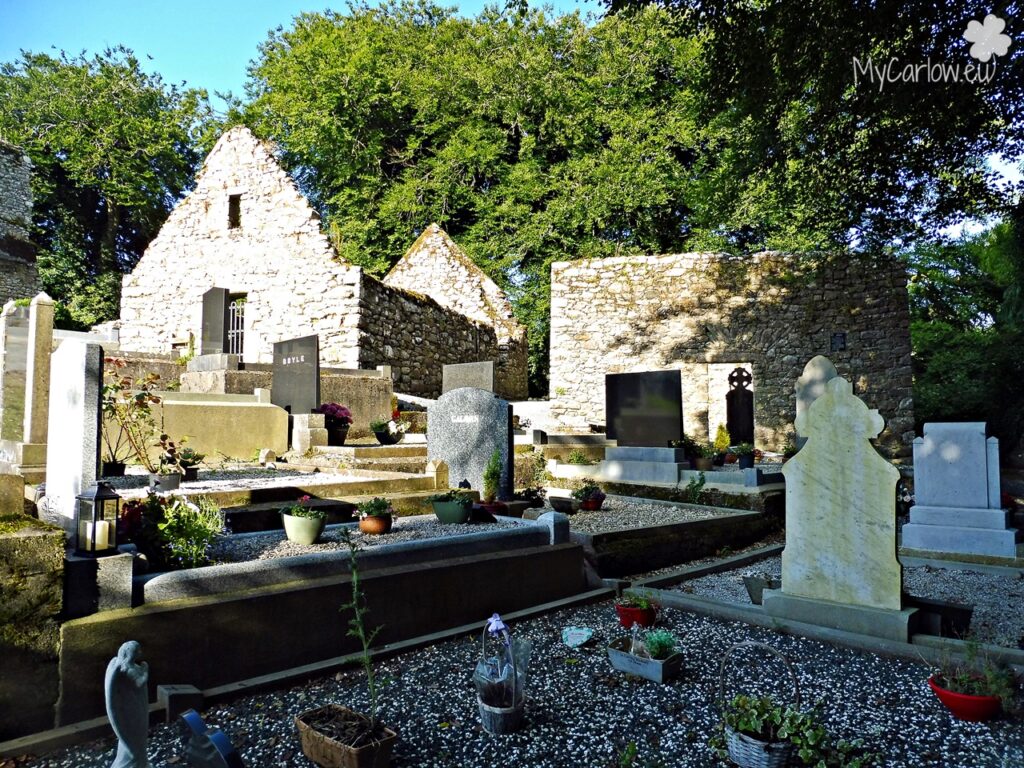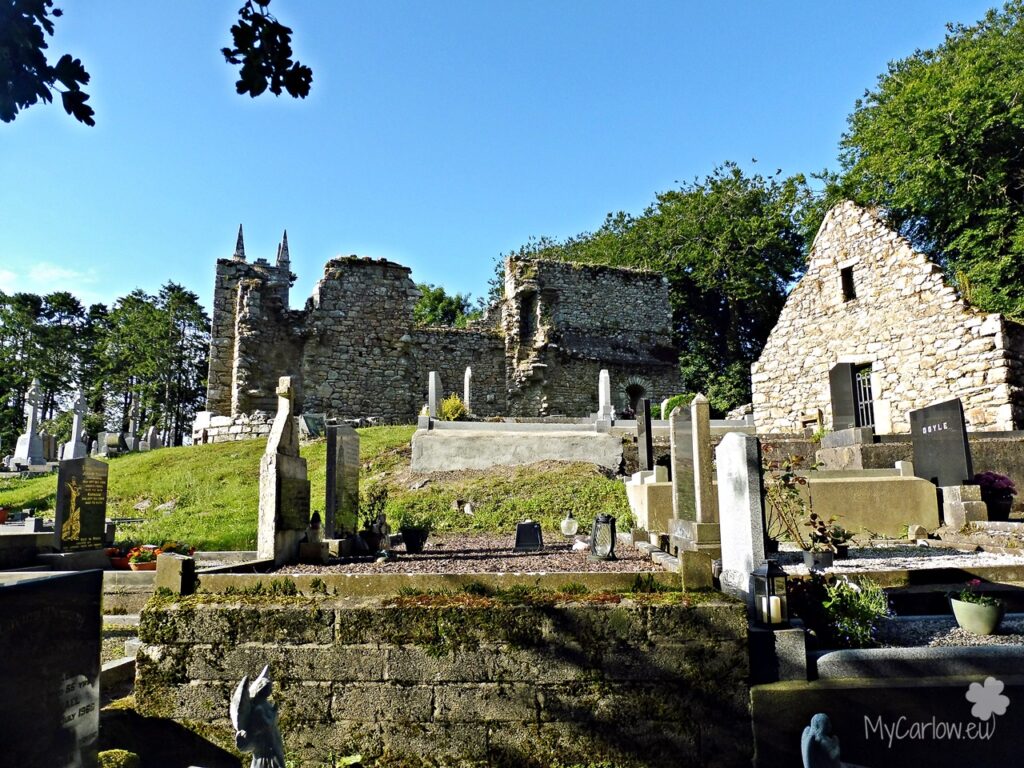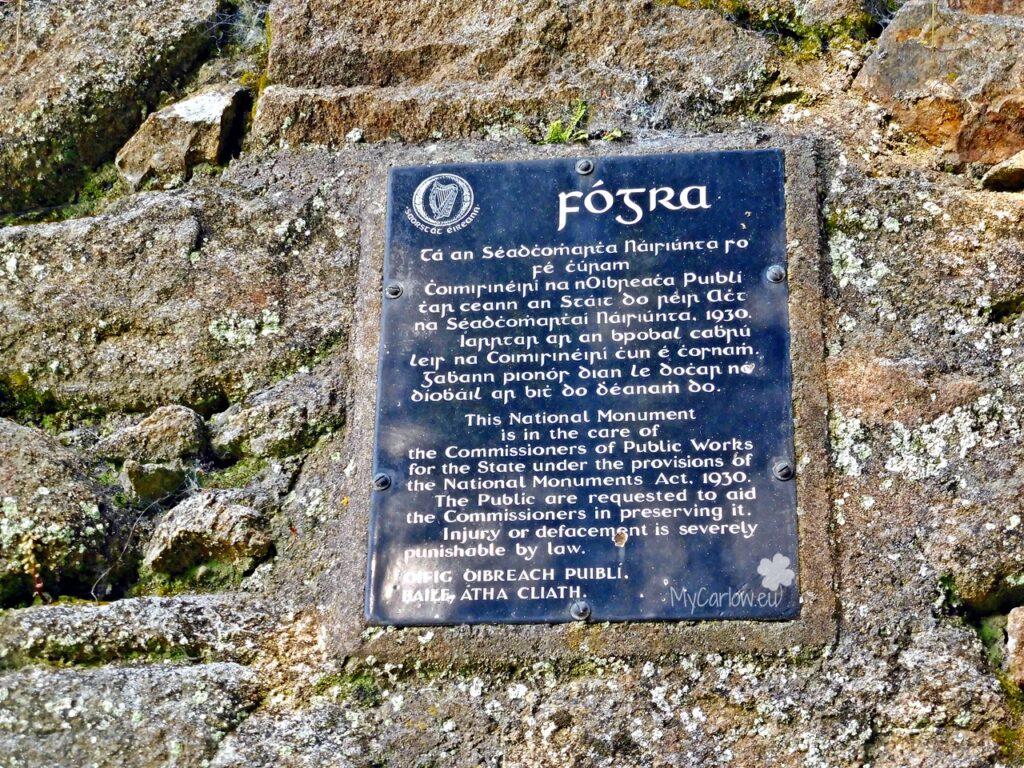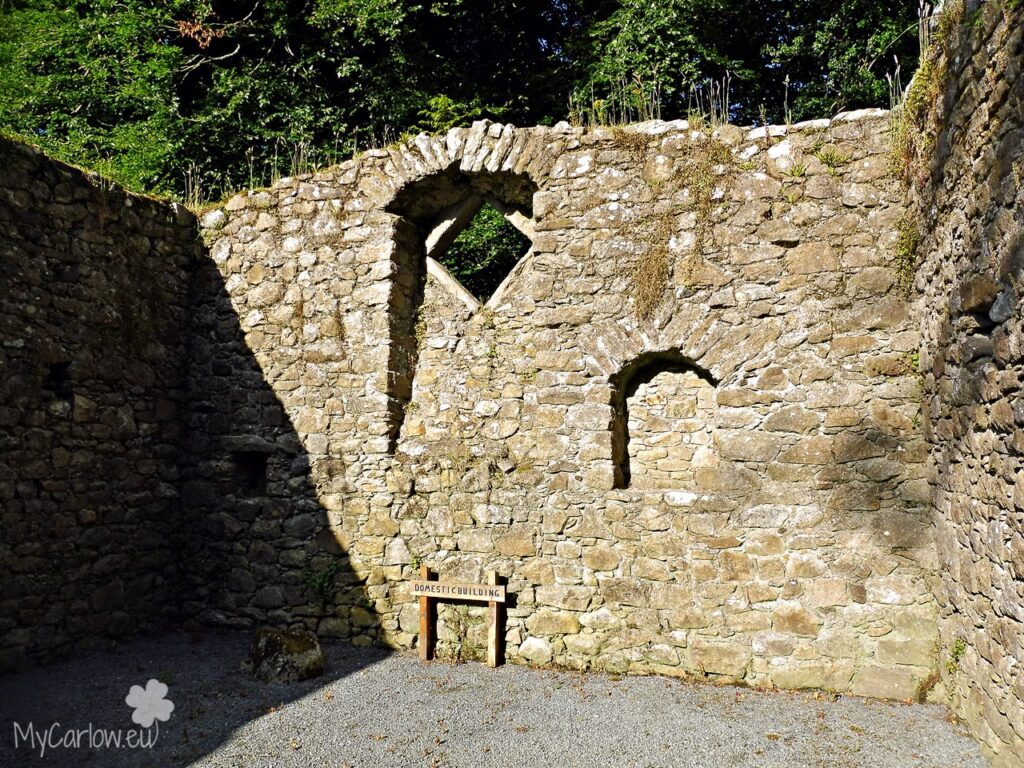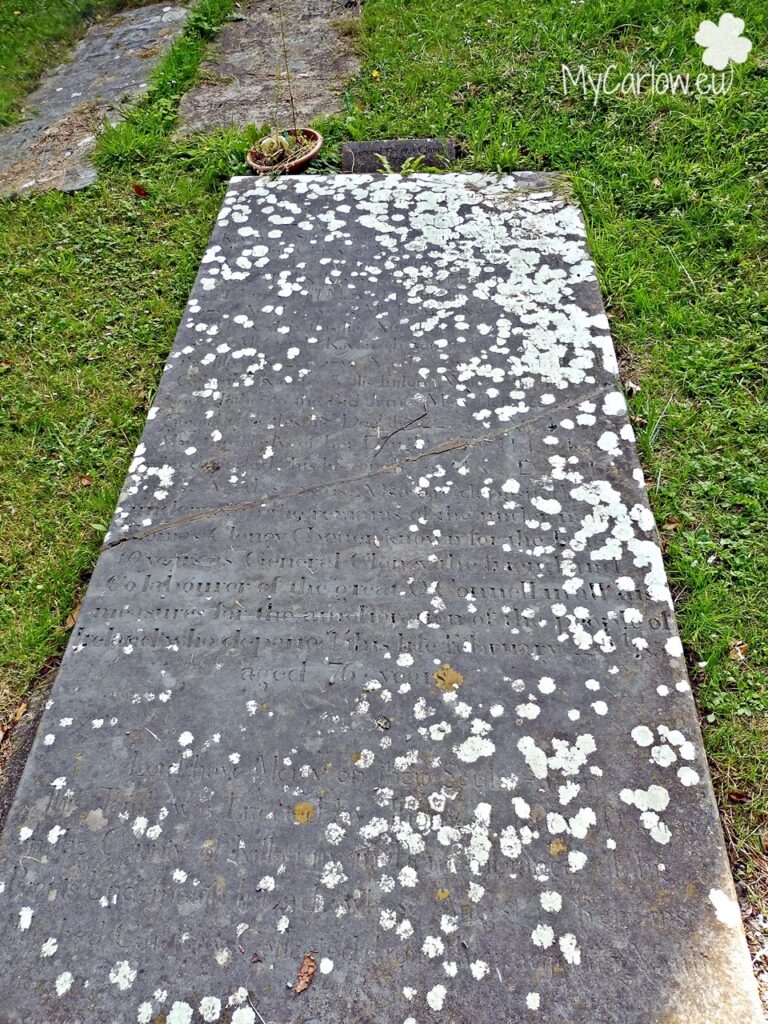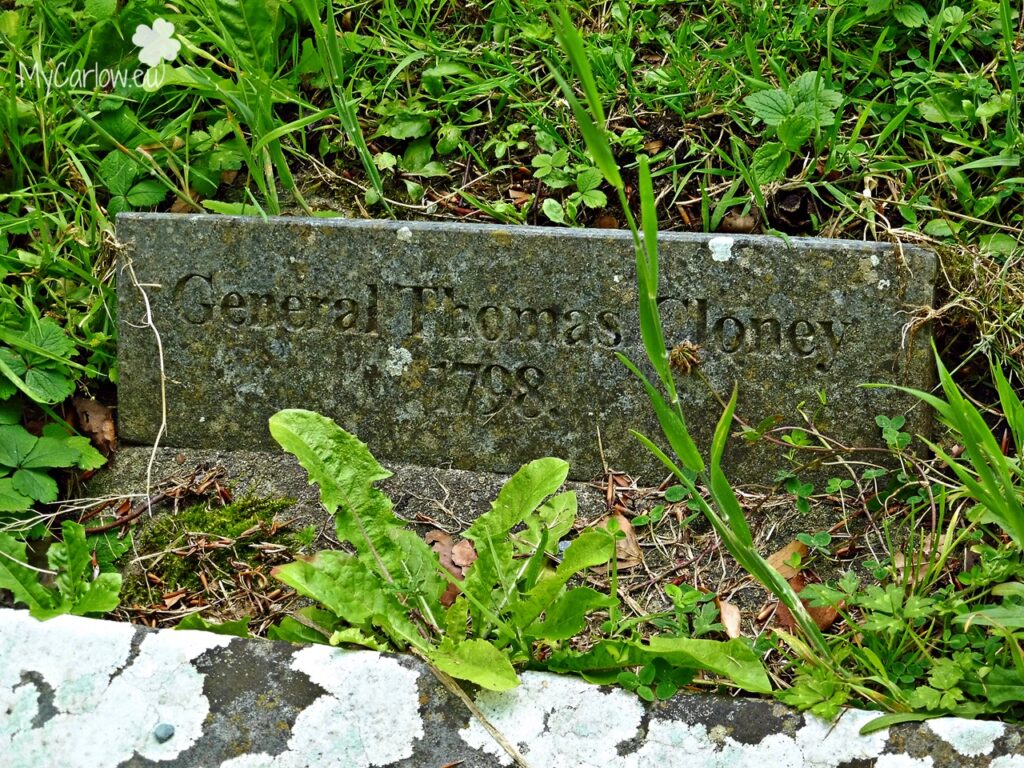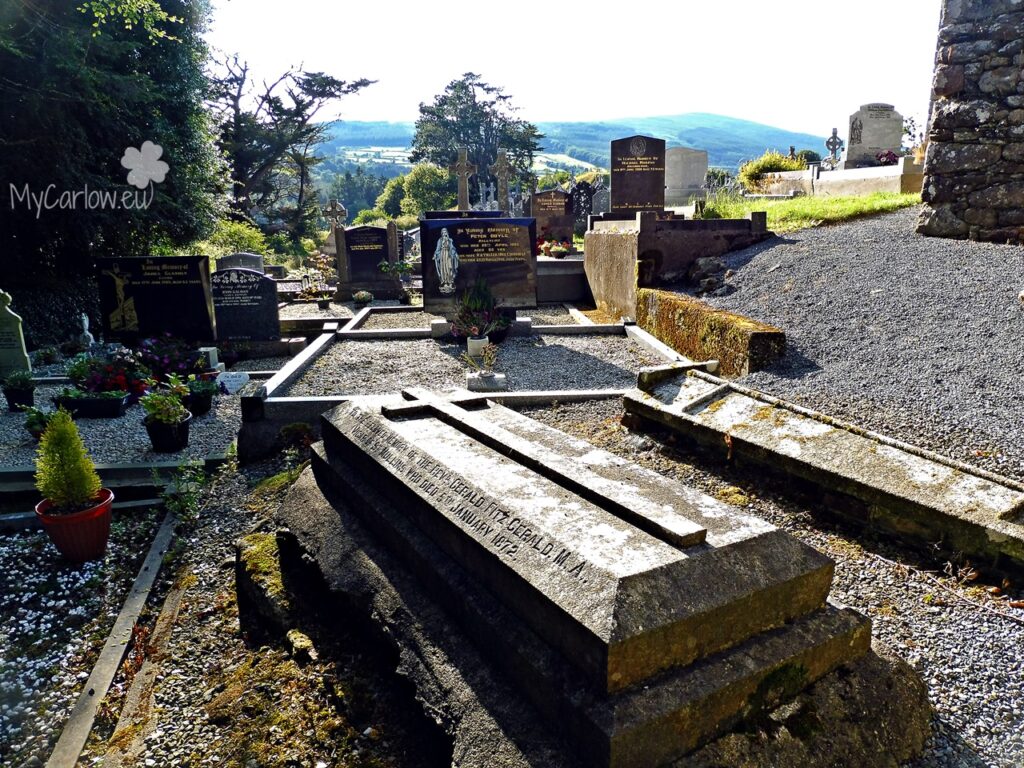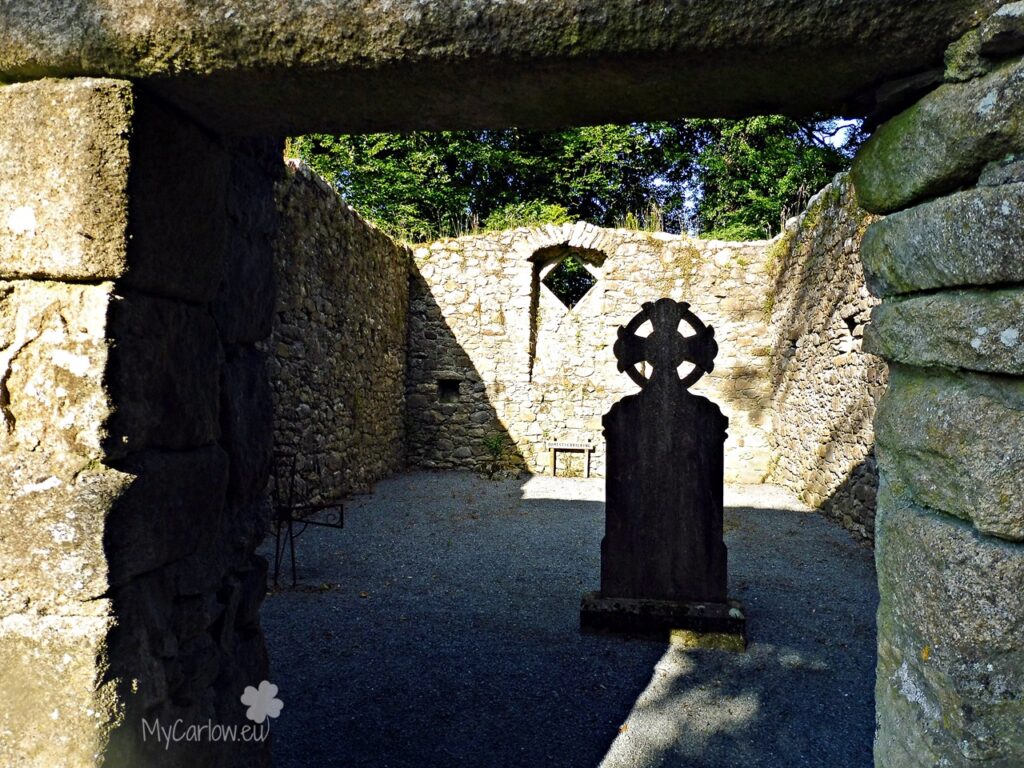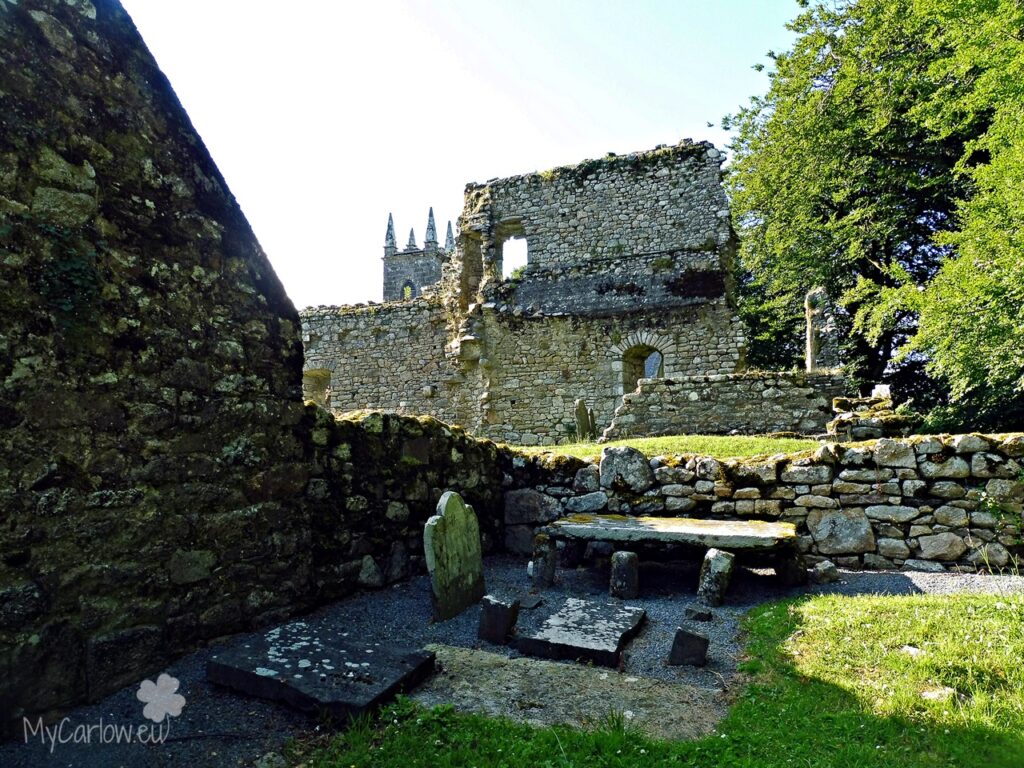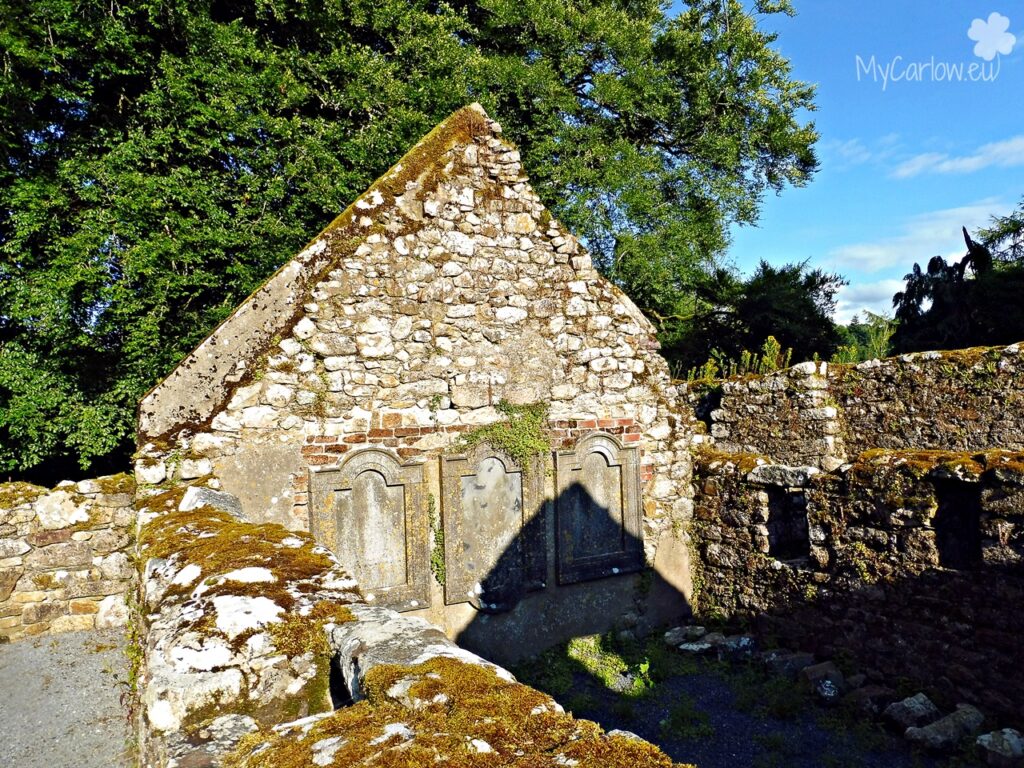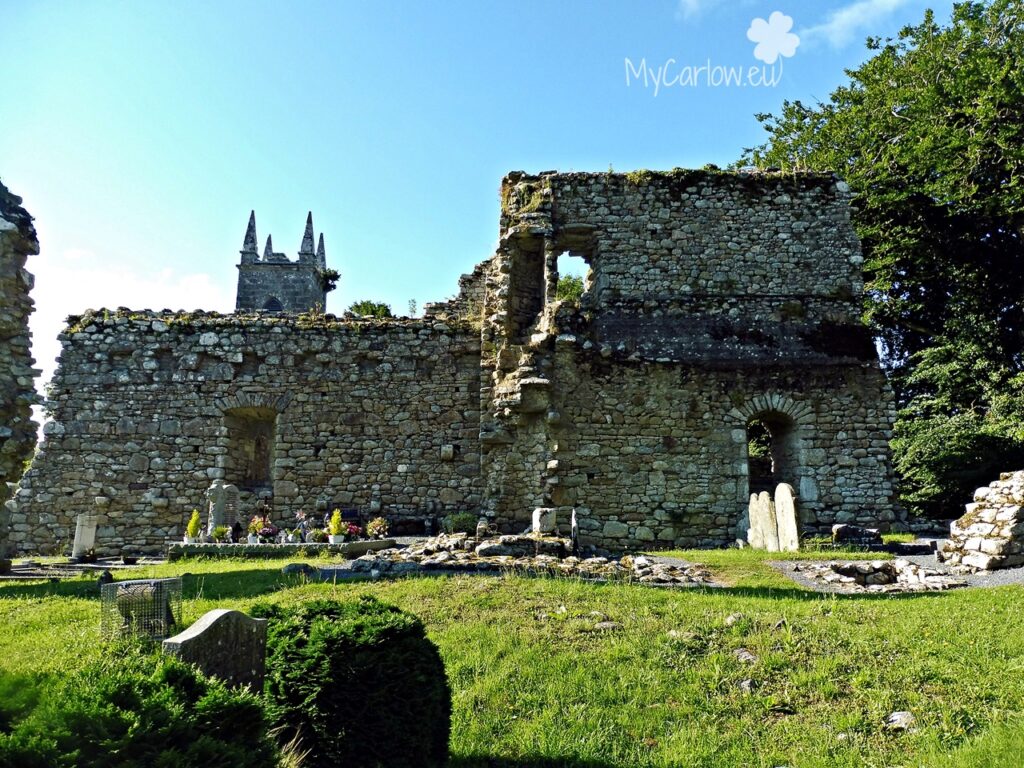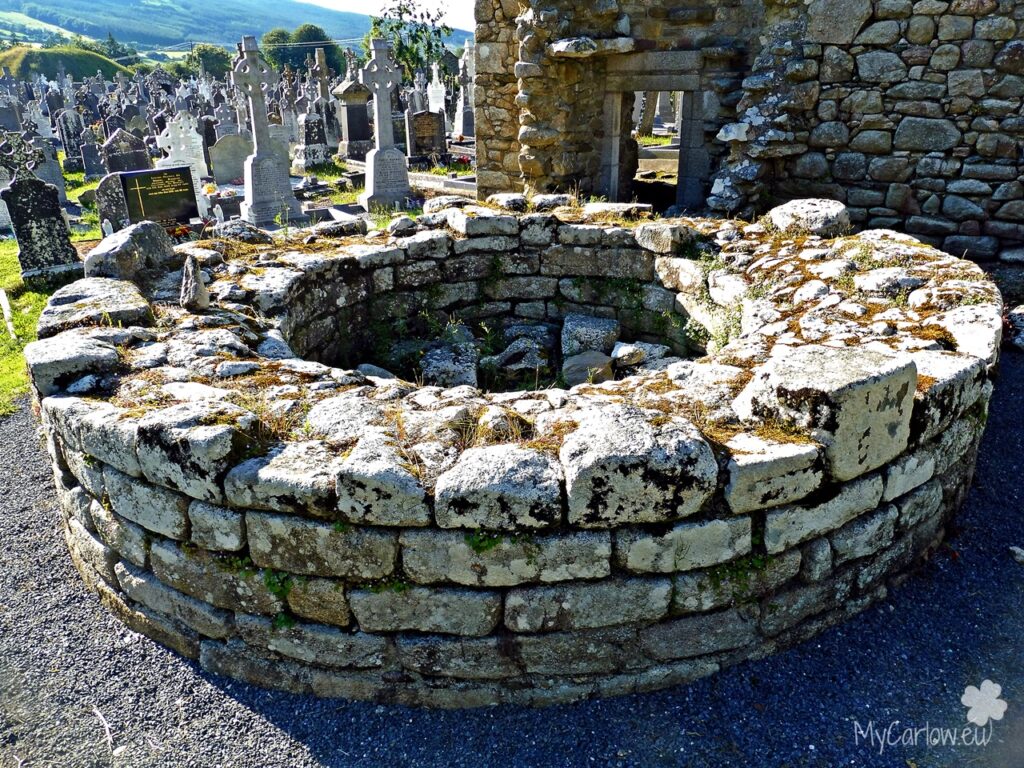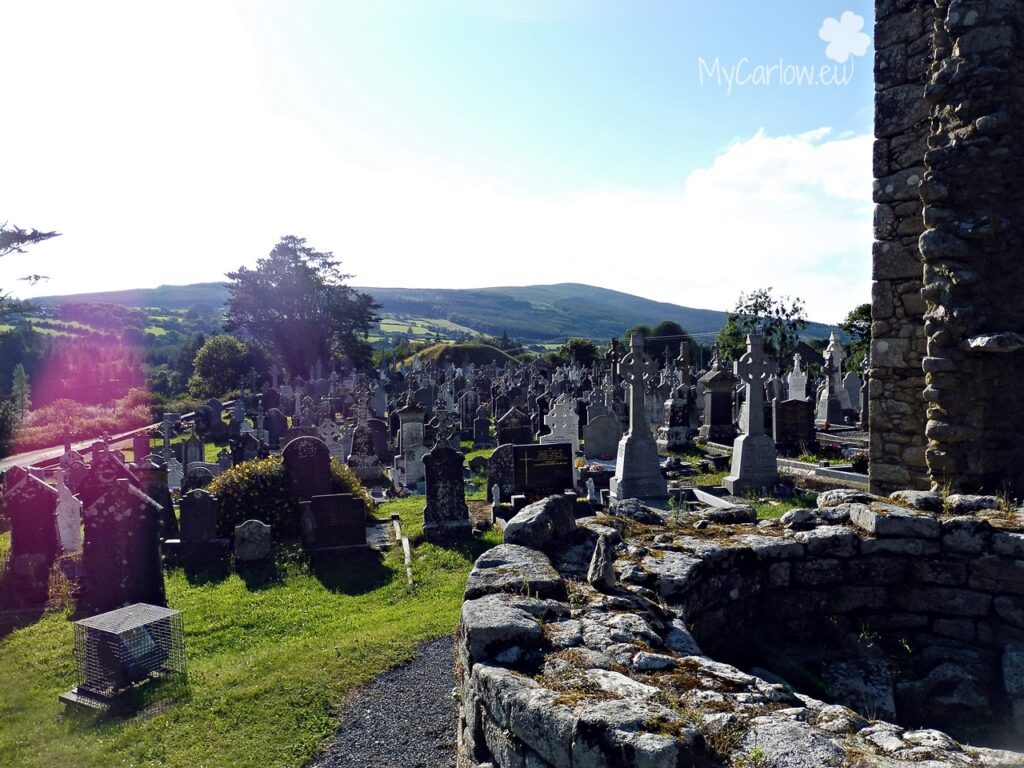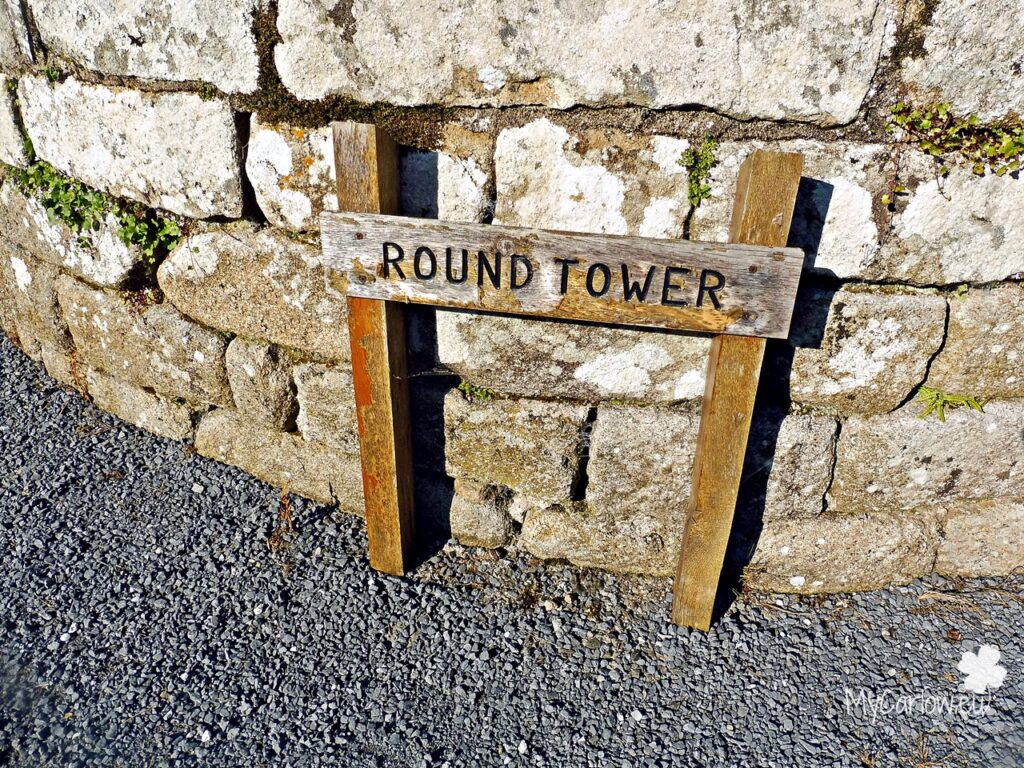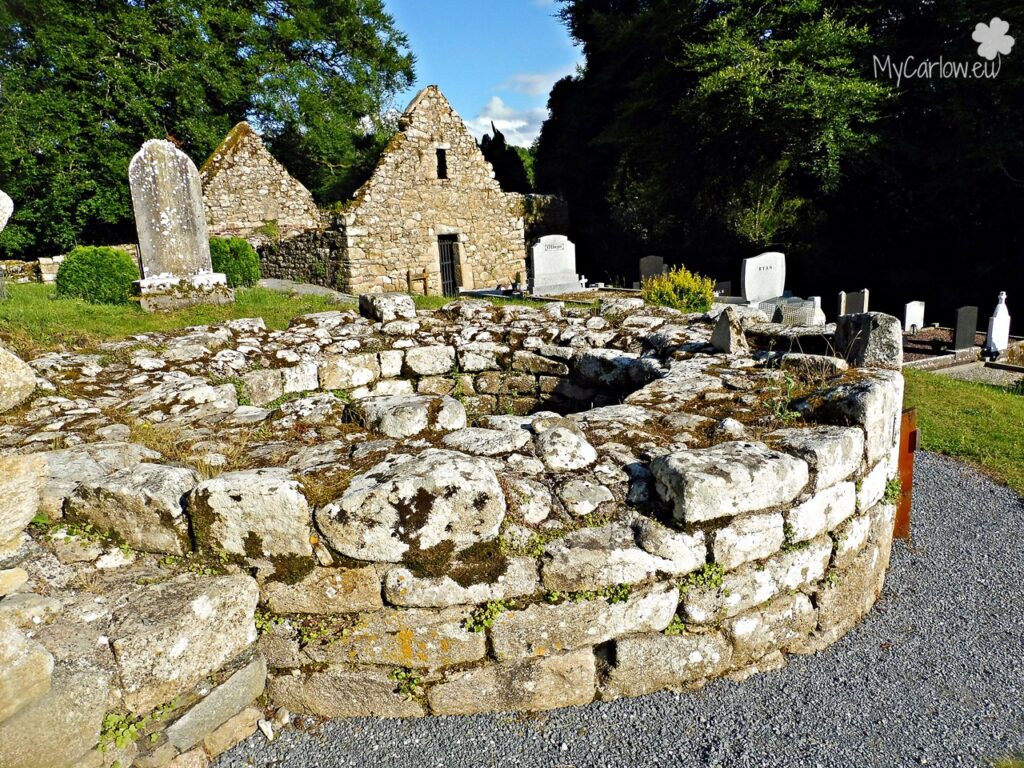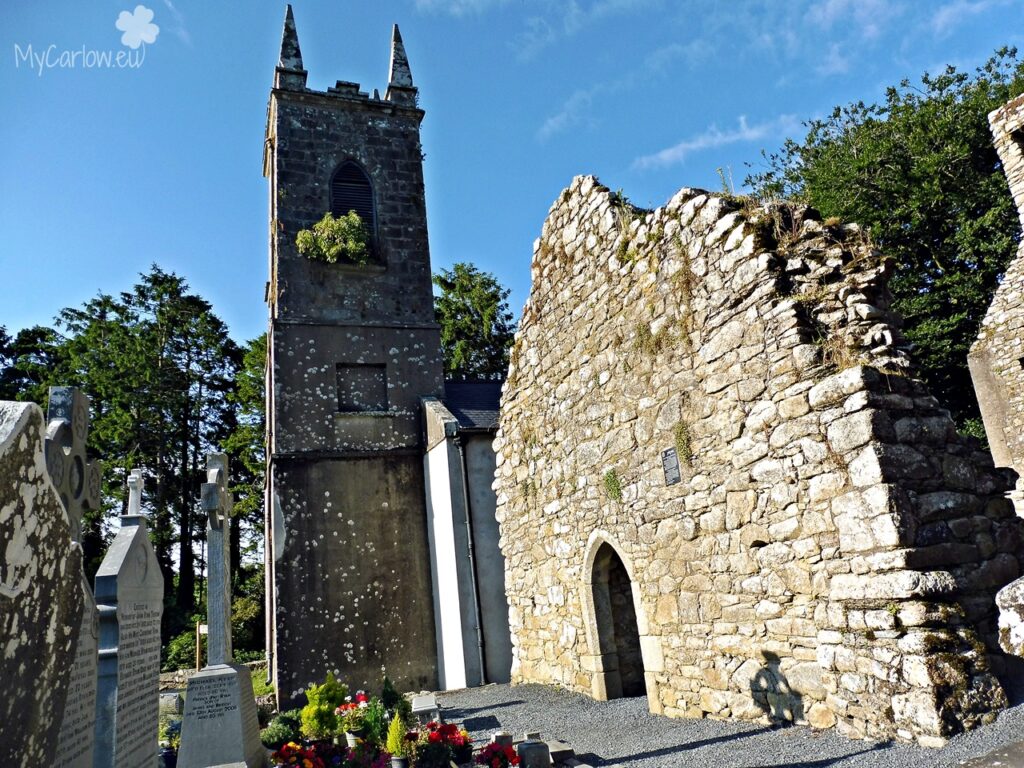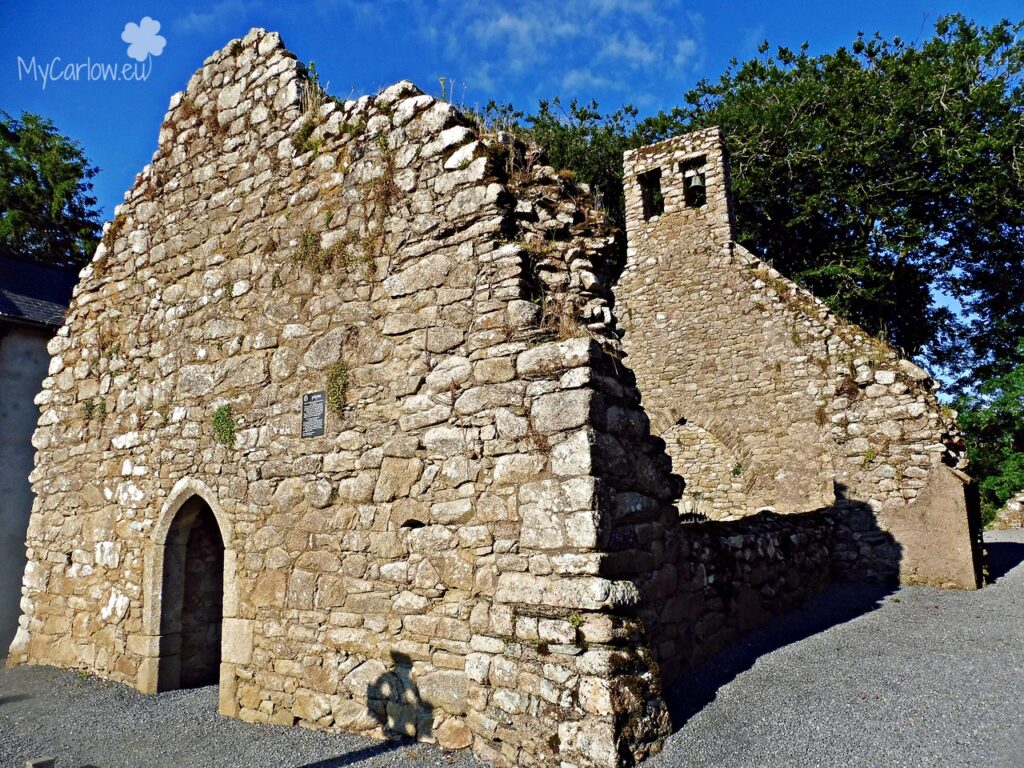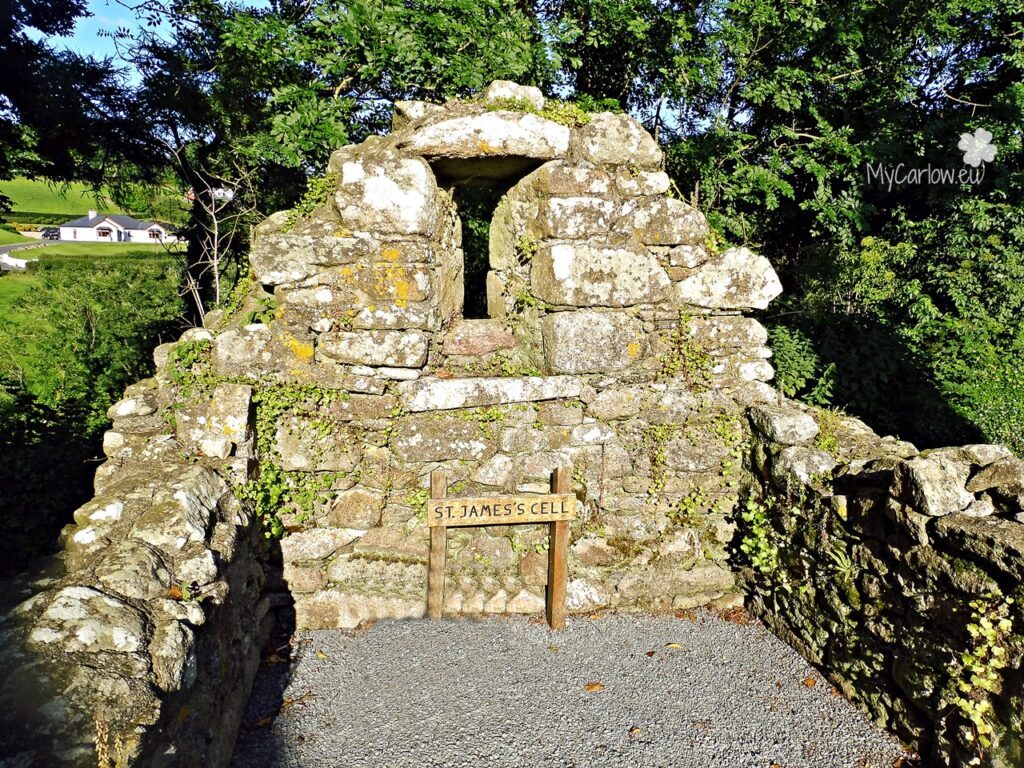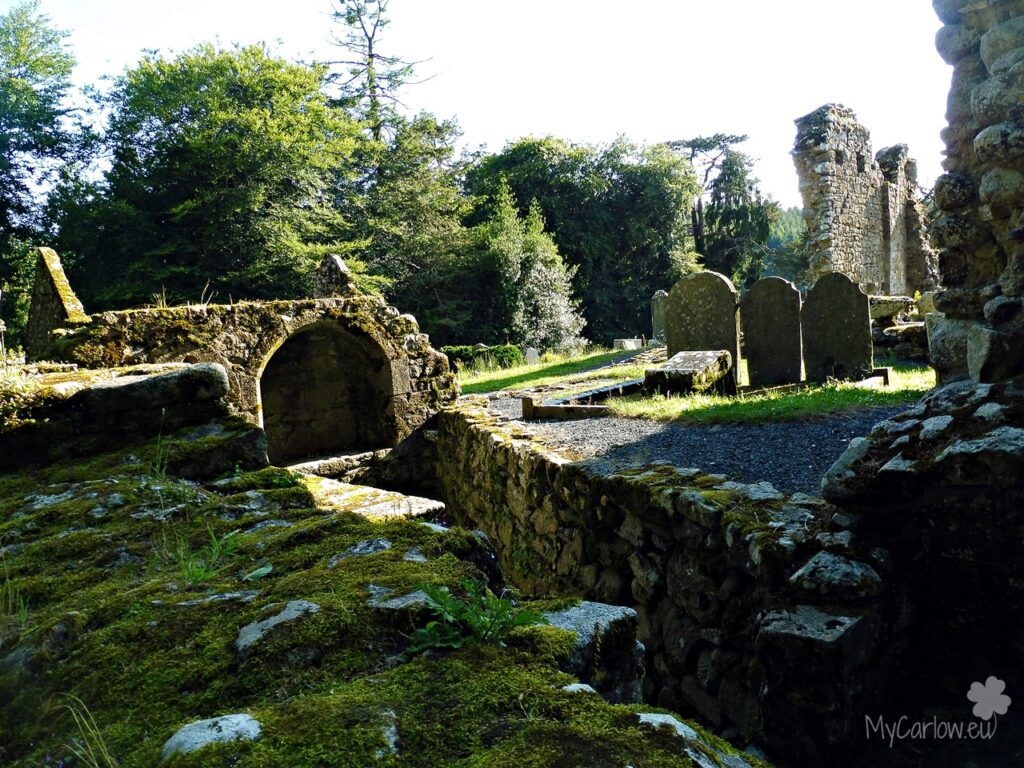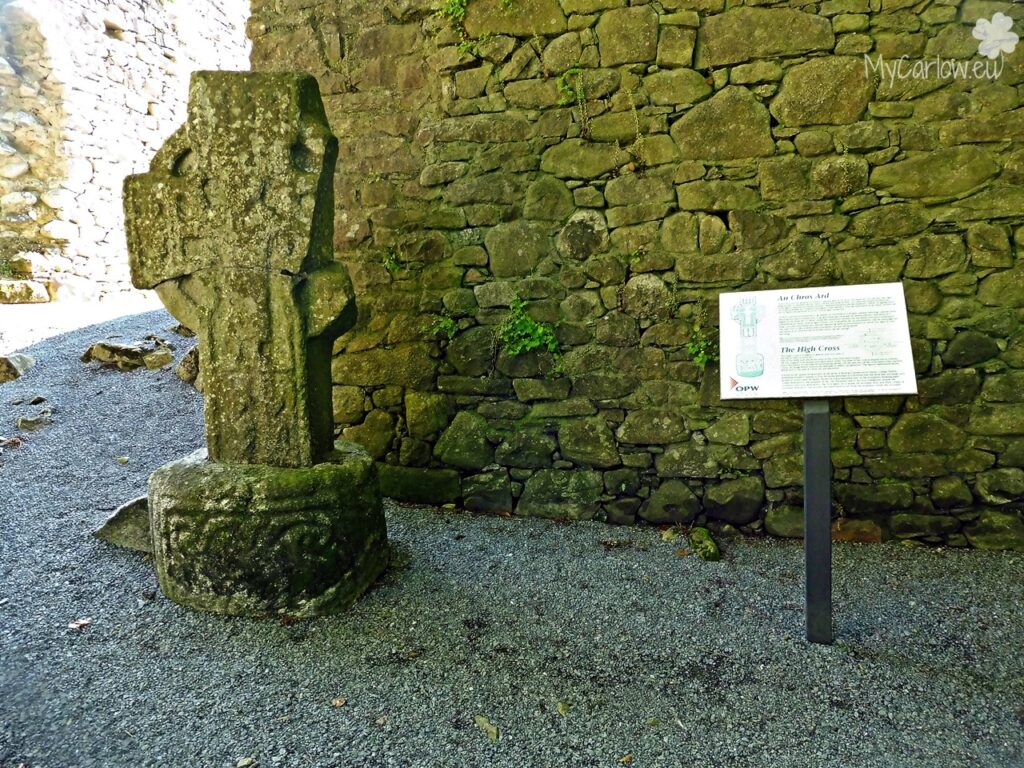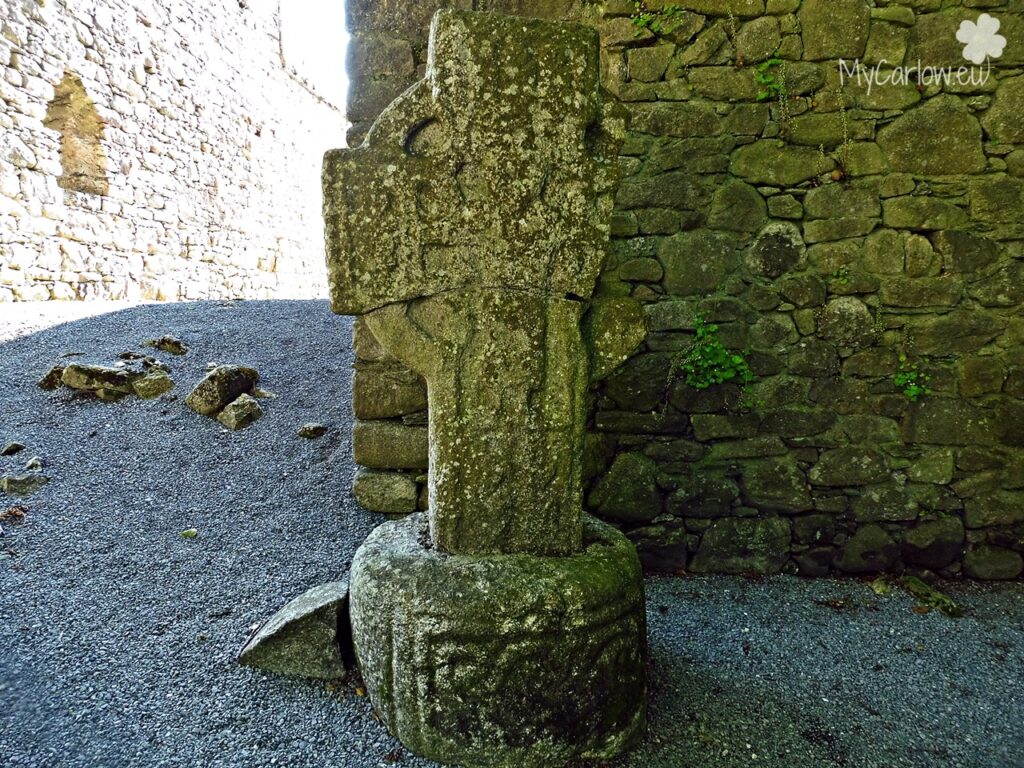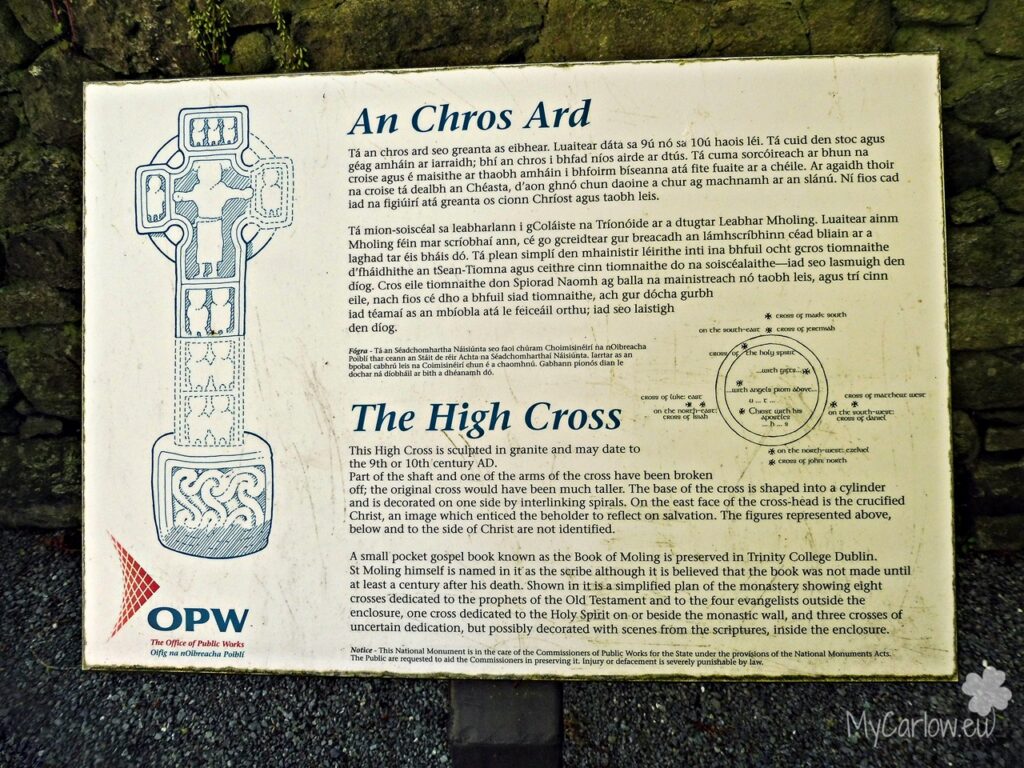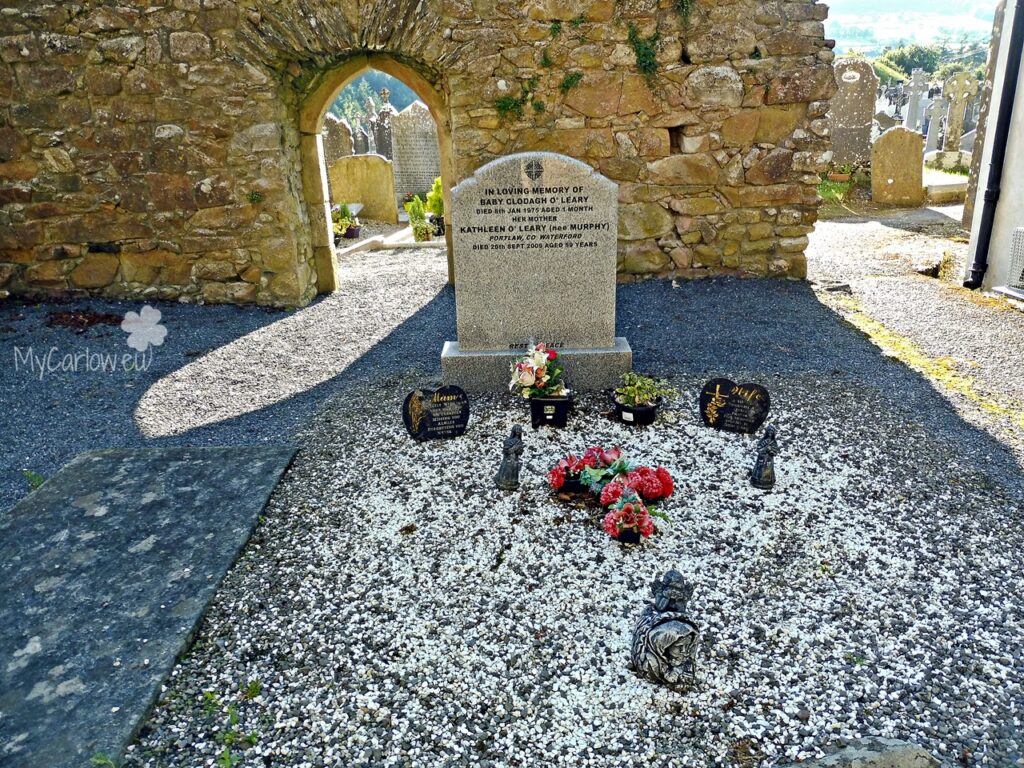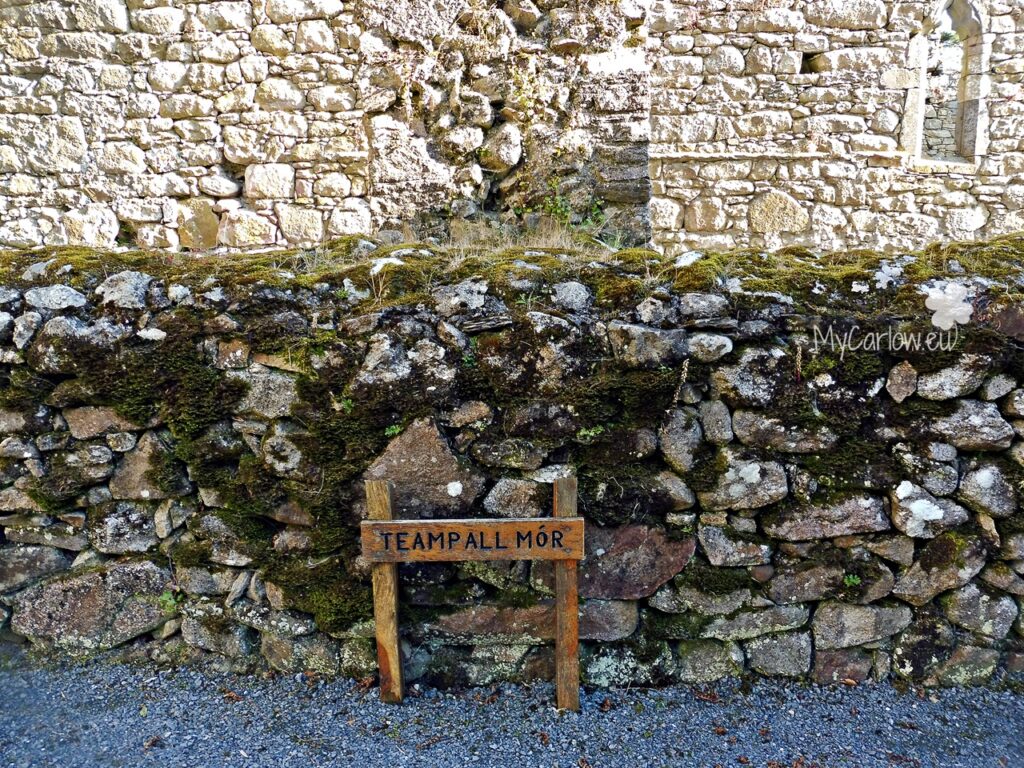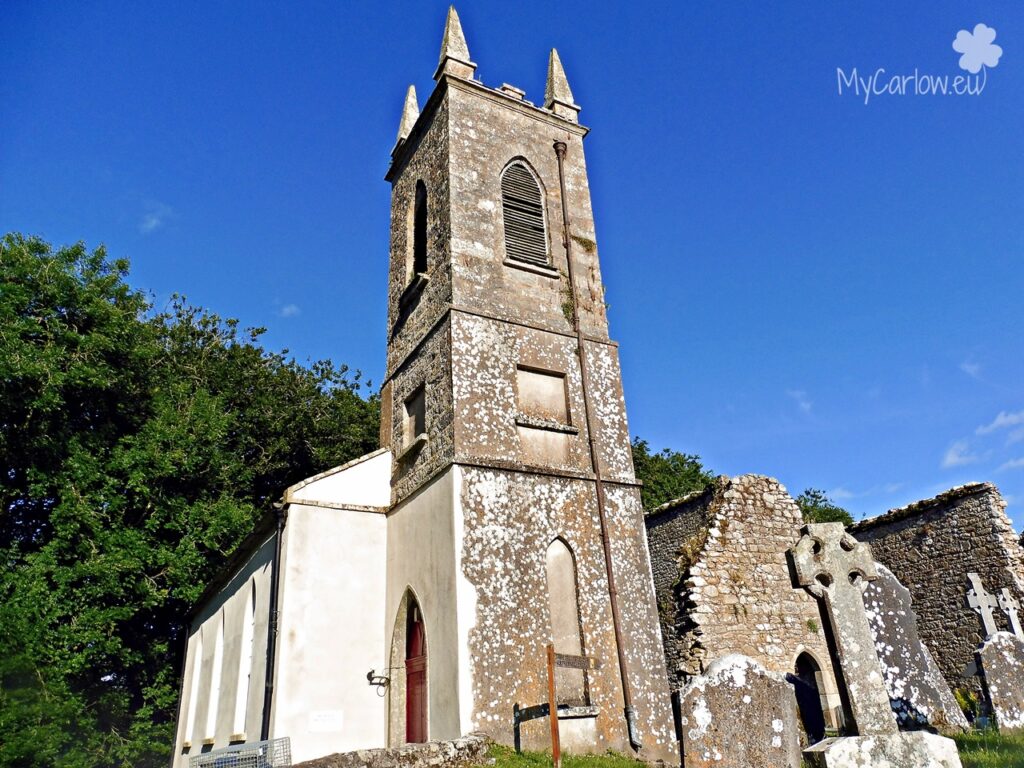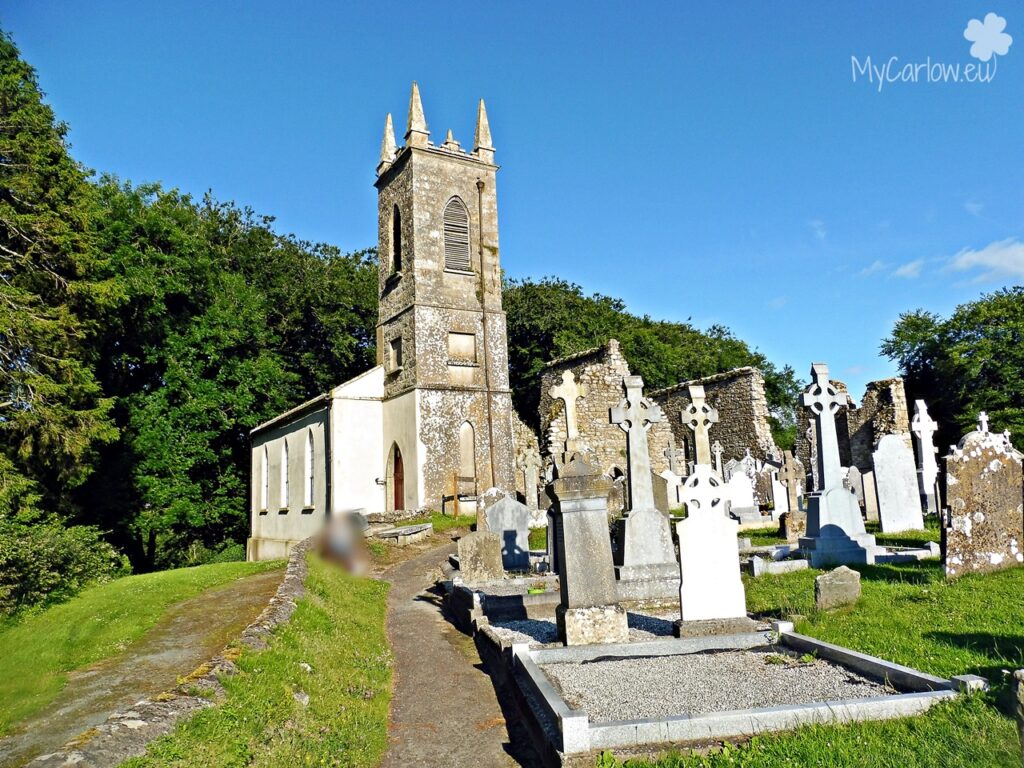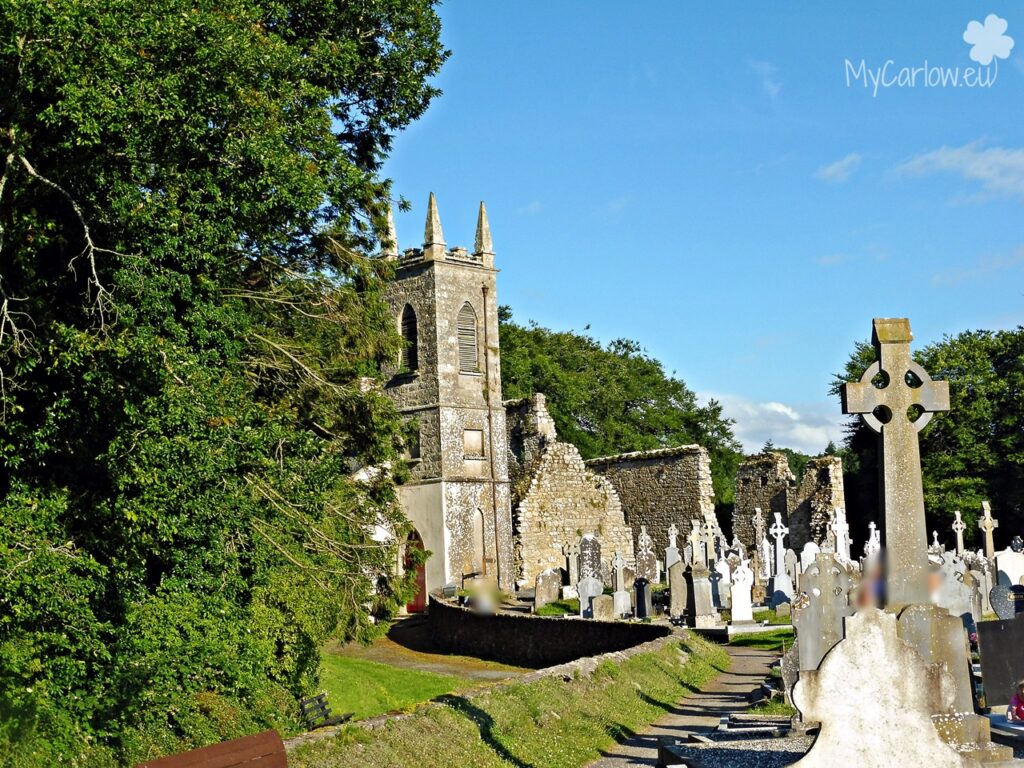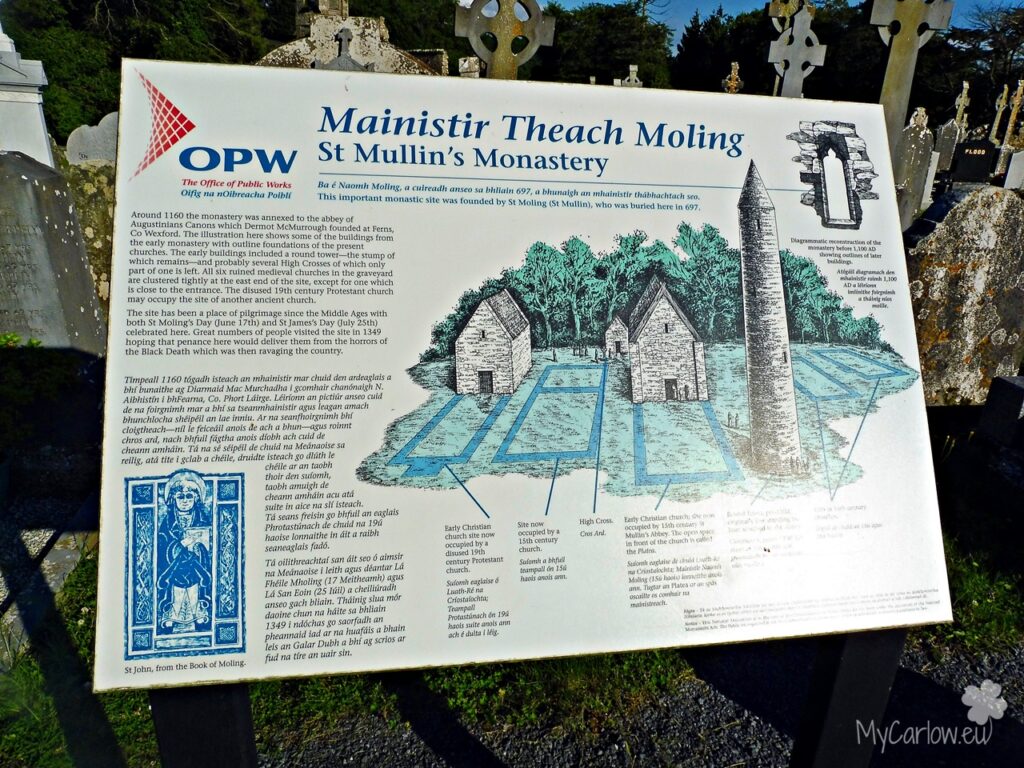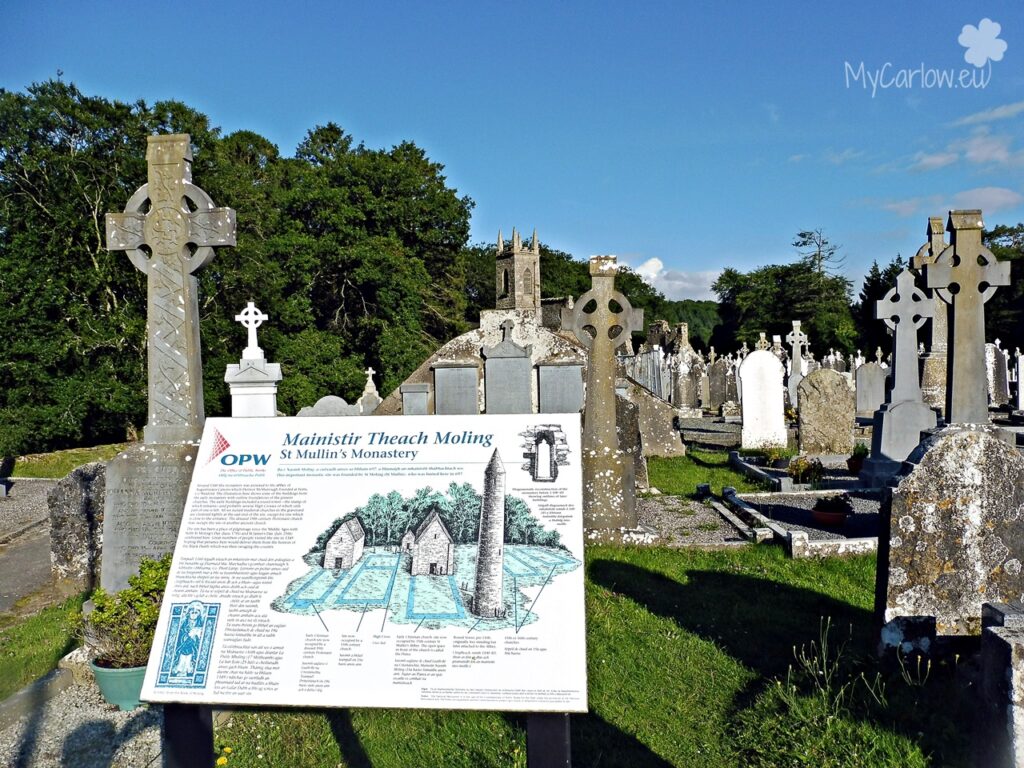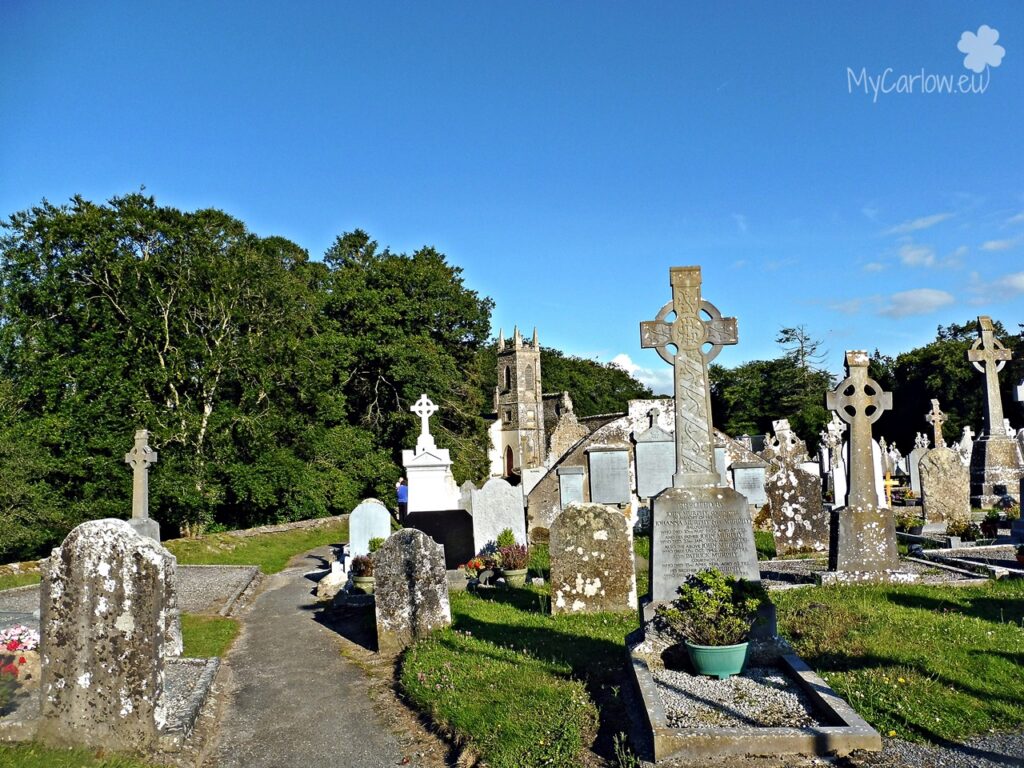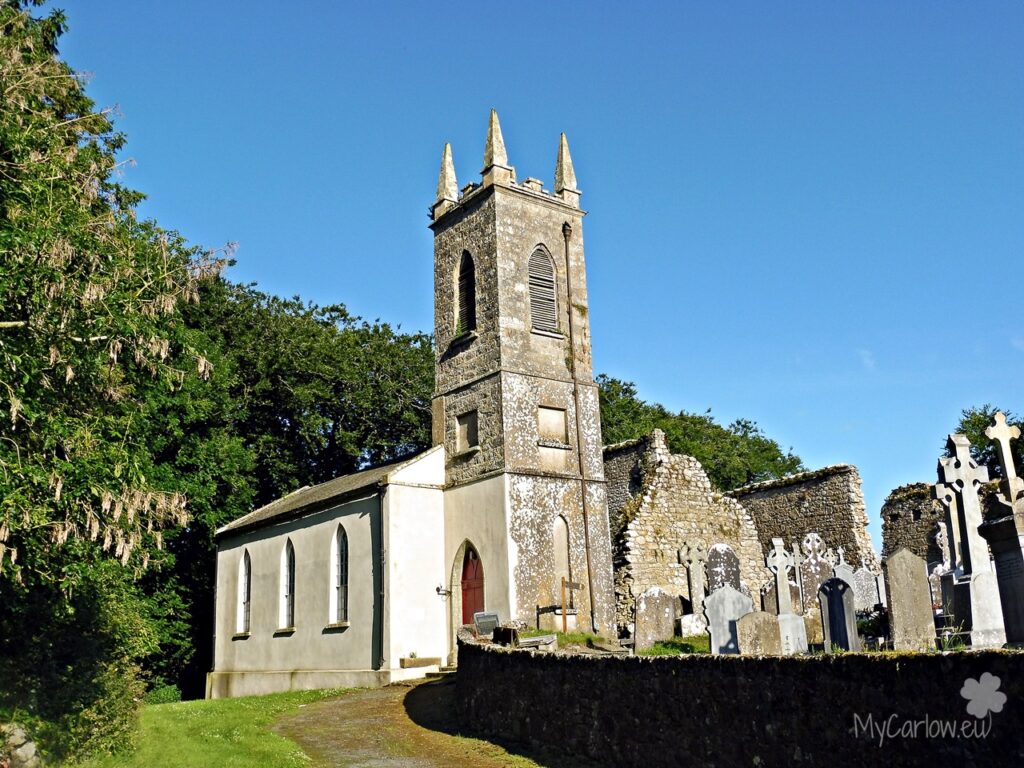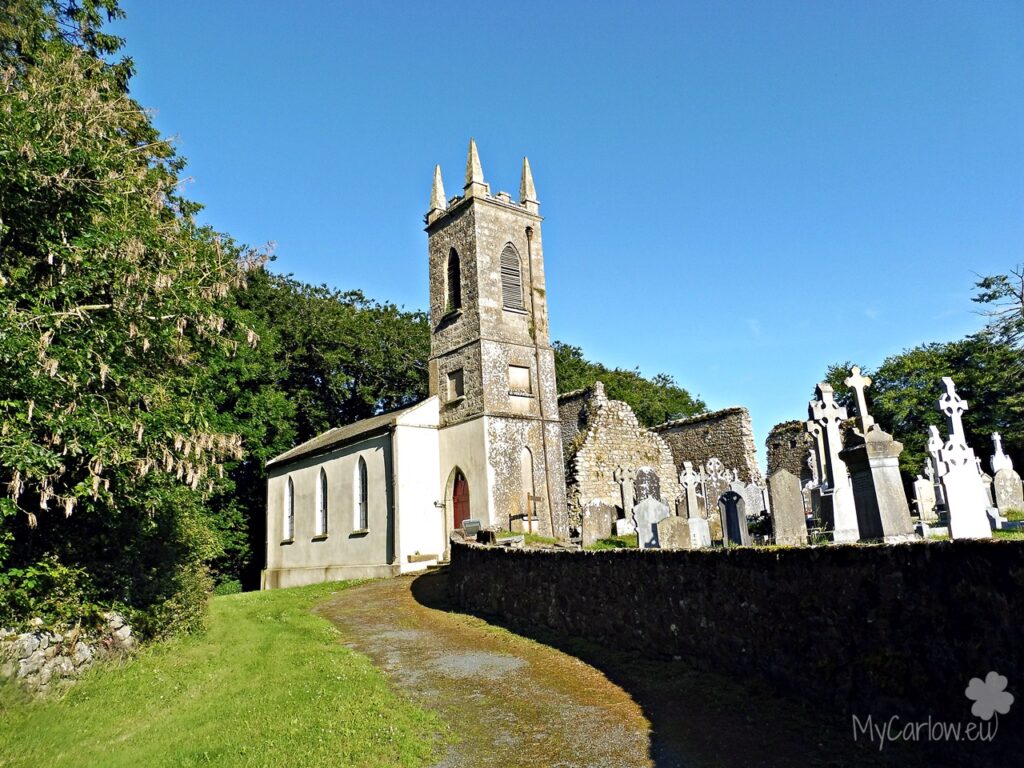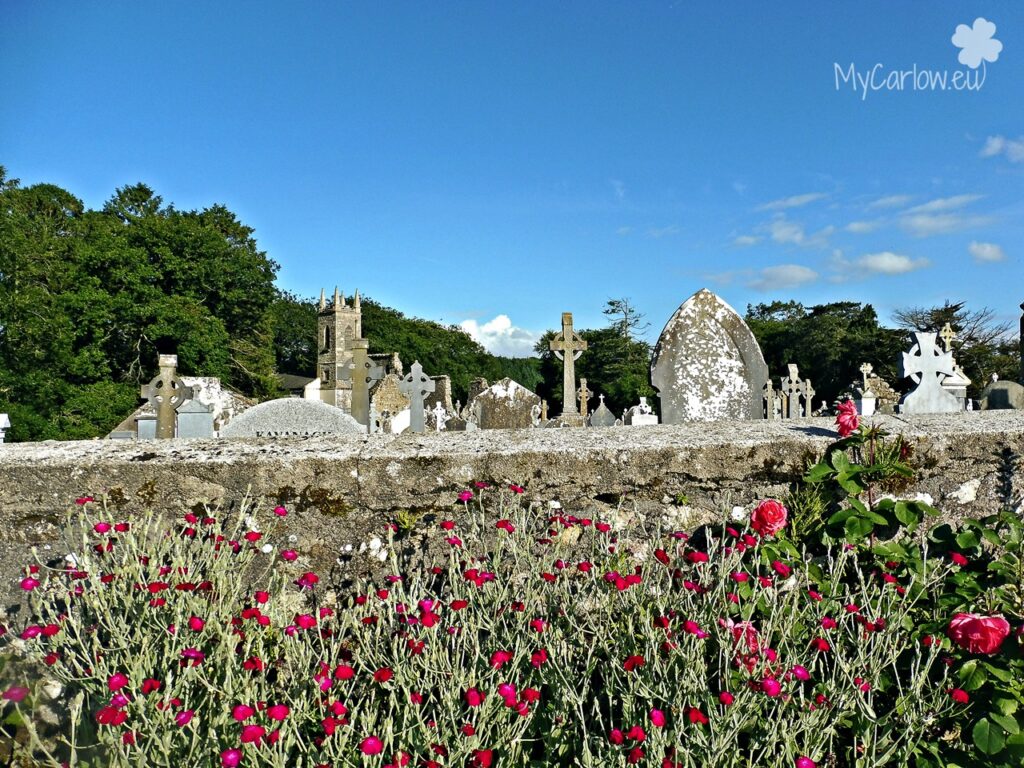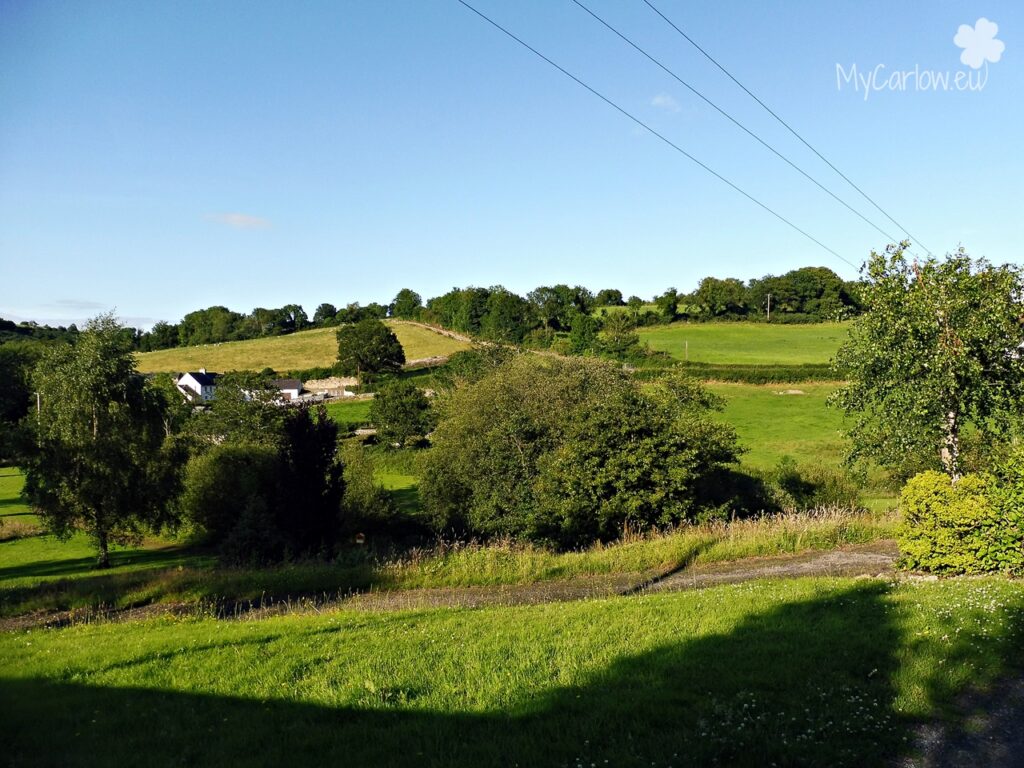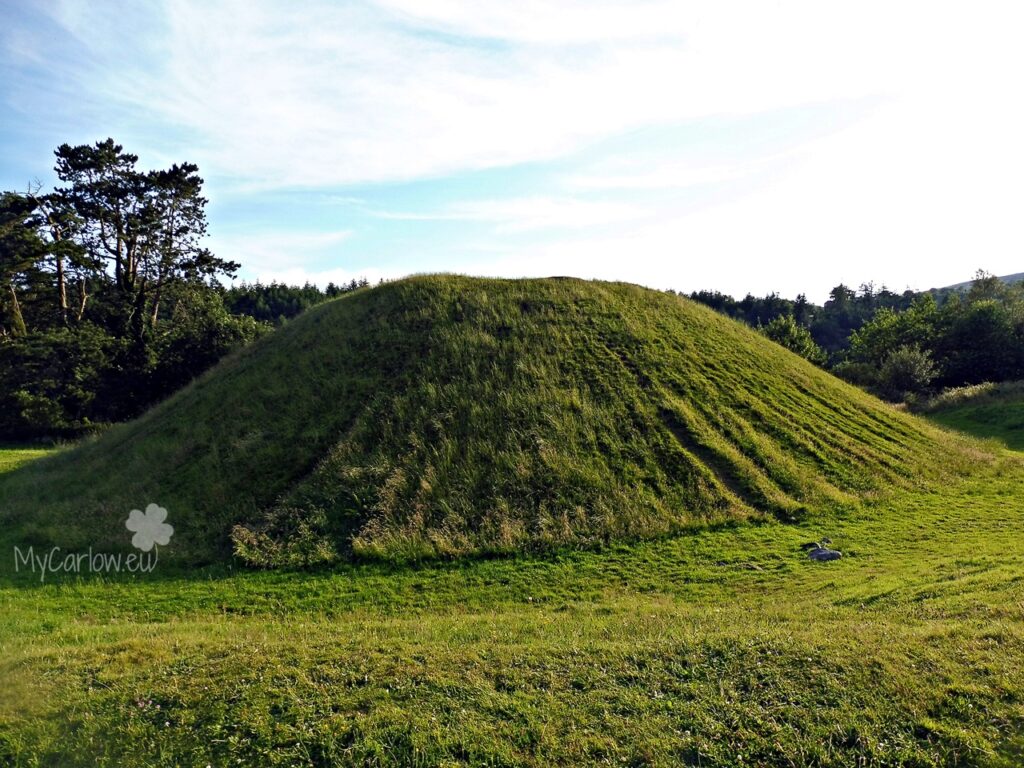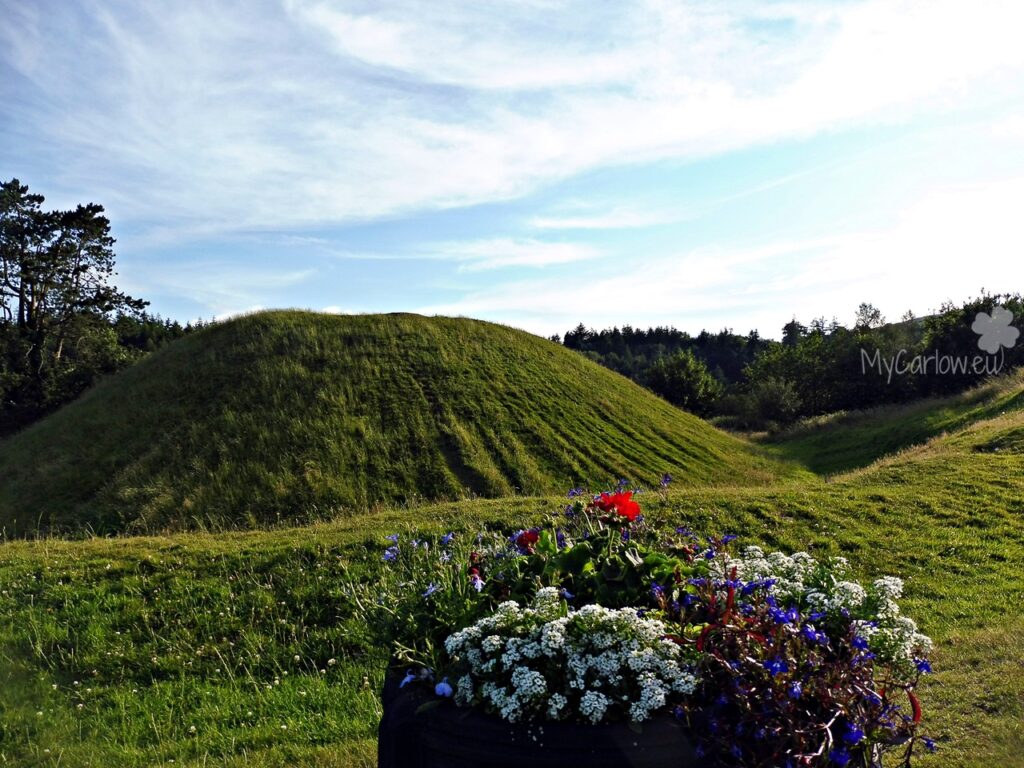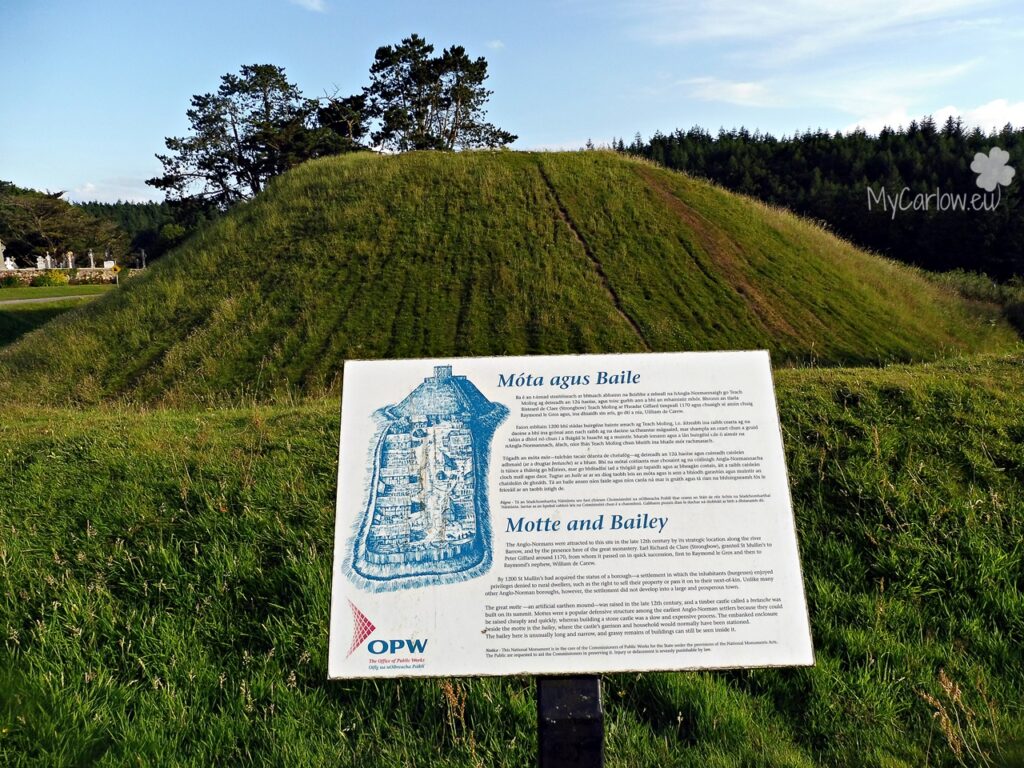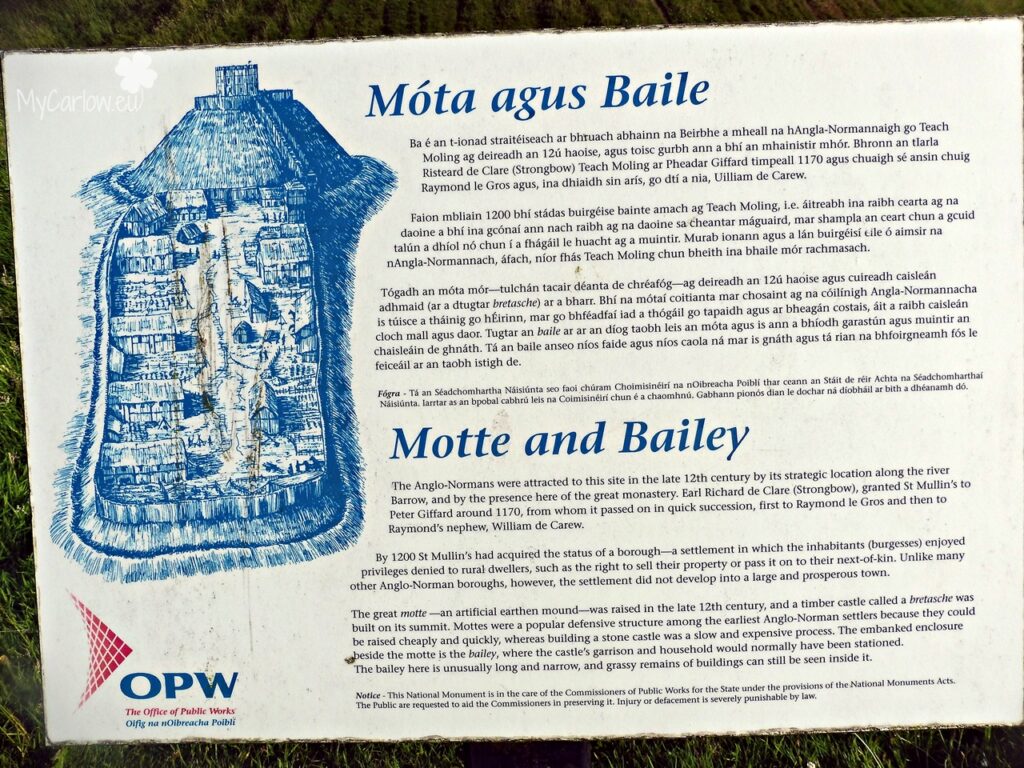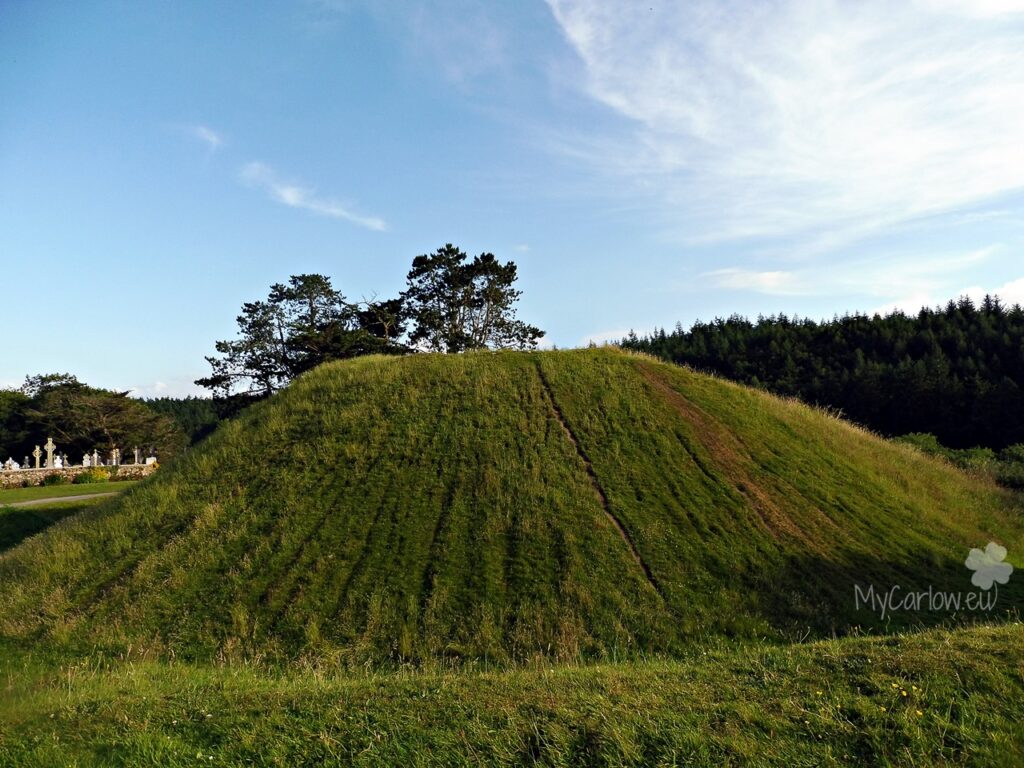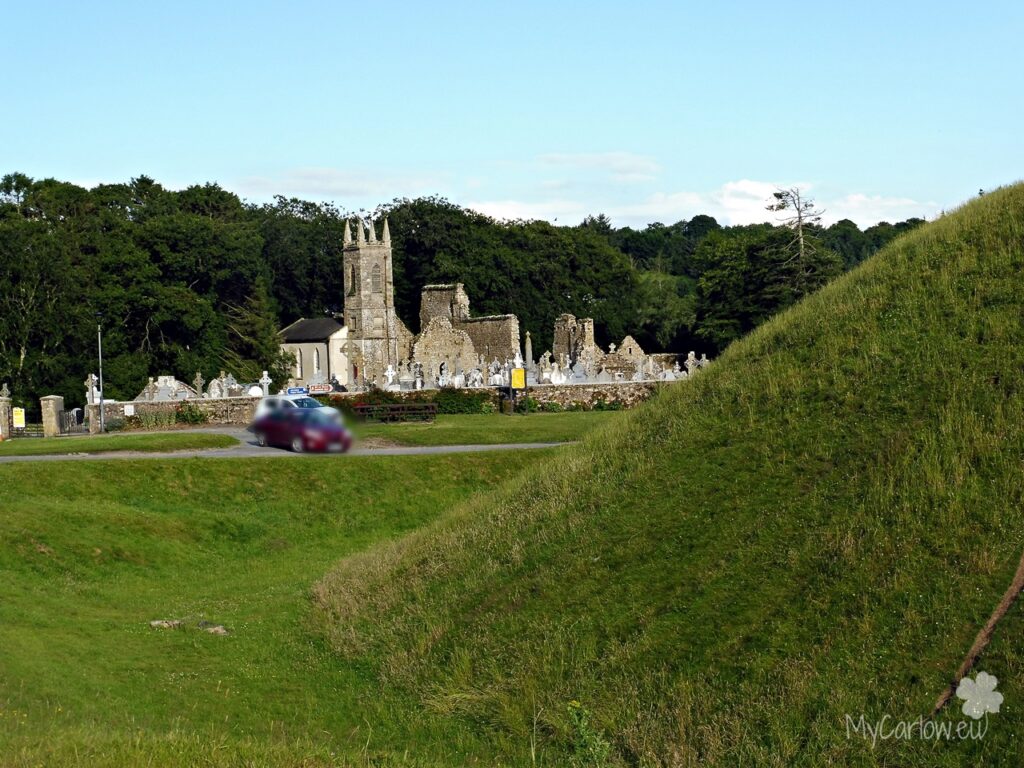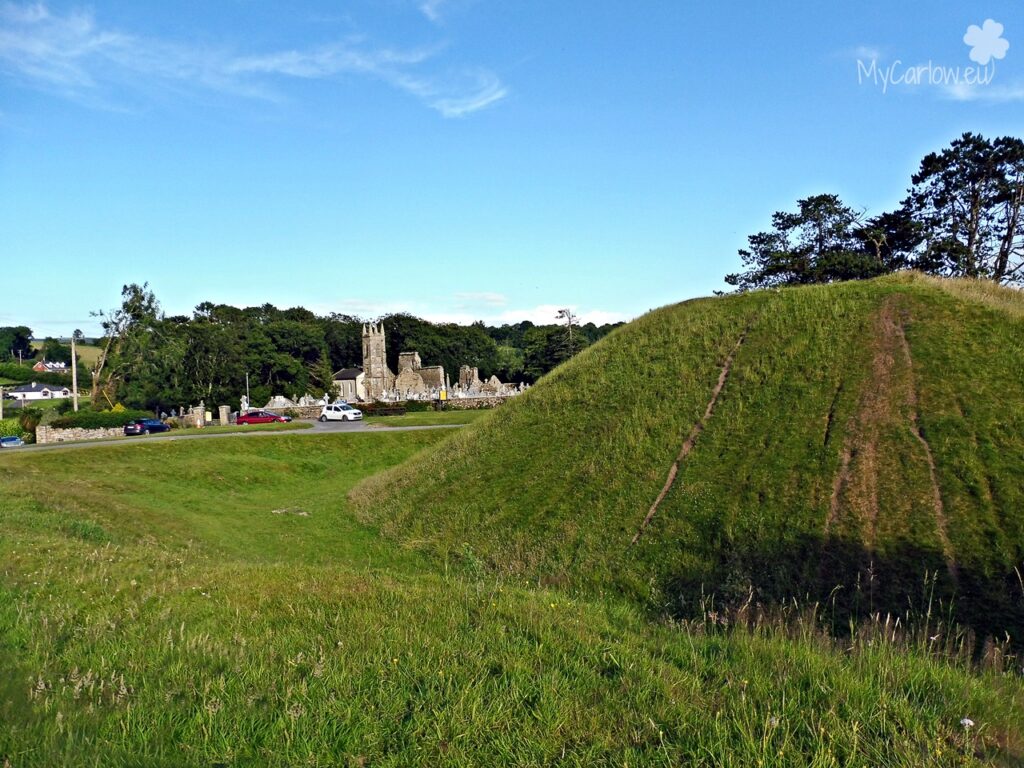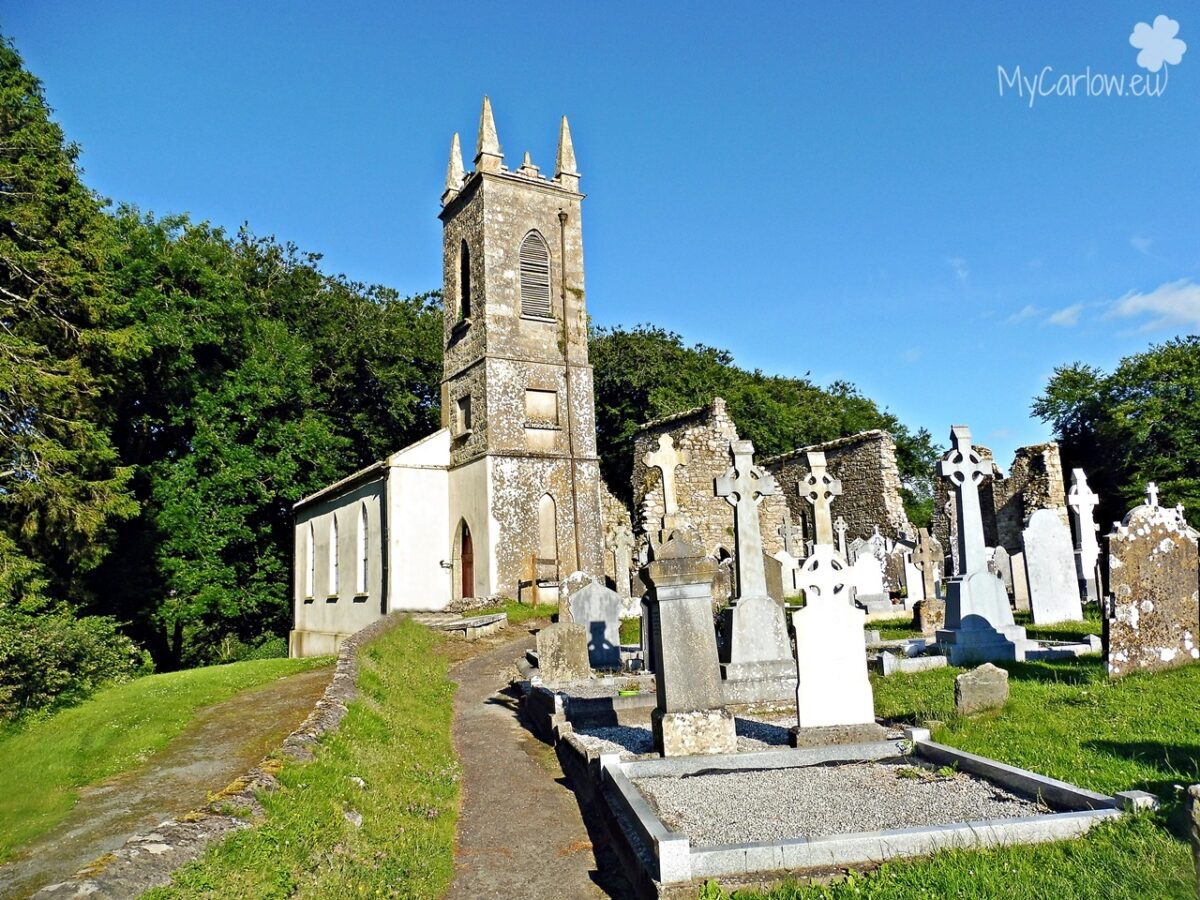
St Mullin’s Monastic site is one of the most significant archaeological sites, standing in importance with Glendalough and Clonmacnoise. So, it attracts many historians, archaeologists, and general visitors to County Carlow and the River Barrow area.
So, the village of St Mullin`s is named after Saint Moling (or Mo Ling, 614–697), who founded a monastery there in the early 7th century. What’s more, the monastery was said to have been built with the help of “Gobán Saor”, the legendary Irish builder. Furthermore, in the 8th-century manuscript, known as “The Book of Mulling”, there is a plan for the monastery. So, the earliest known plan of an Irish monastery shows four crosses inside and eight crosses outside the circular monastic wall.
Moreover, it is said that St Moling dug a mile-long watercourse with his own hands to power his mill. A task that took seven years. Then, He became Bishop of Ferns and died in 697. And is believed to be buried in St. Mullins, in a place called “Teampall Mór” (Great Church), today marked with a plaque. Besides, the St Moling watercourse is still there. But the original monastery was plundered by Vikings in 951 and was again burnt in 1138. And, an abbey was later built on the site. Moreover, the 9th-century high cross, showing the crucifixion and a Celtic spiral pattern, stands outside the remains of the abbey.
Today, the remaining ecclesiastical ruins are situated at the back of the graveyard. So, they include five churches and the remains of a round tower.
In addition, the churchyard lies in the shadow of an Anglo-Norman motte. And contains a fascinating collection of 18th and 19th-century gravestones. So, during penal times, mass was said at the altar in the center of the graveyard. Over the altar is an aperture through which a warning could be communicated to the priest from a watcher positioned on the motte.
Then, the former Church of Ireland, situated beside the renowned monastic ruins and cemetery was originally built in 1811.
What`s more, hidden at the rear of the wonderful monastic ruins of St Mullins Abbey is The High Cross which depicts the Crucifixion. So, it is sculpted in granite and may date to the 9th or 10th century AD.
The MacMurrough Kavanaghs, former Kings of Leinster, together with other Celtic Kings, are buried in the precincts of the monastery. Fr. Daniel Kavanagh, who is said to have had the gift of healing, is also buried here.
Also, the participants of the unsuccessful rebellion of 1798 against British rule and their leader, Gen. Thomas Clonely, are buried in the cemetery.
In addition, the views of the area from the hill where the cemetery is located are amazing.
There are also the remains of a Norman motte and some domestic medieval buildings. Including one that has an unusual diamond-shaped window. And then, St Moling’s Mill and St Moling’s Well are close by.
Finally, the Motte is located directly beside the main entrance to St Mullins monastic site.
What`s more, strategically placed overlooking the Barrow River, it is certainly one of the most beautiful locations for an Anglo-Norman Motte. The mound was built around the later part of the 12th century when Richard De Clare (Strongbow) granted permission. Therefore, this huge artificial mound, which was erected sometime in the late 12th century, also contains an outer enclosure or Bailey. It was where the castle’s garrison and household would have resided. Besides, surrounded by a deep ditch, the steep-sided mound was originally surmounted by a wooden tower, from which archers could dominate the surrounding landscape.
Location of St Mullin’s monastic site:
Below are photos I took in July 2021.
